
Autumn of 1863
“I'll Be Seeing You In All Those Old Familiar Places"
October 15 - November 19, 1863
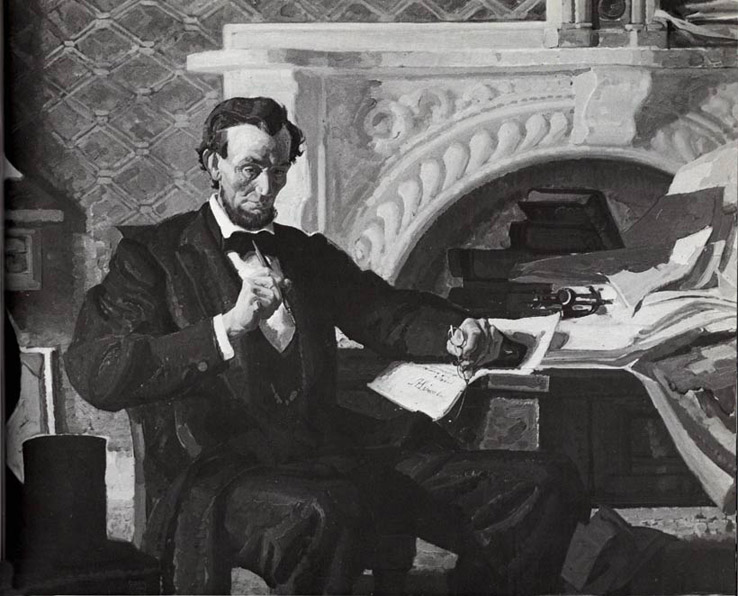
Painting of President Lincoln by amazing artist Dean Cornwell, depicts the writing of his 1863 Thanksgiving Proclamation which created the National Holiday. The document was actually written by Secretary of State William H. Seward. The proclamation was issued October 3d and falls in line with this period of the 13th MA Vols. history.
Nonetheless, President Lincoln loomed large over General Meade and the Army of the Potomac in the Autumn of 1863. And Lincoln's reputation was about to grow even larger among the general public following his soon to be given remarks at the dedication of the new National Cemetery at Gettysburg, November 19th 1863.
Table of Contents
- Introduction; October 15 - 21, 1863
- “The 13th Mass.” –– What's On This Page
- A Recap of the Campaign Thus Far
- March to Thoroughfare Gap; October 19
- Narration Part II; General Meade's Troubles with President Lincoln
- March Back to Bristoe Station; October 24
- Move to Catlett's Station, (6 miles) November 5, 1863
Introduction; October 15 - 21, 1863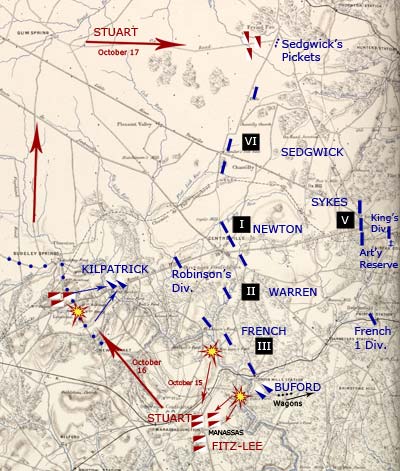
It was a short period of time but a lot of important decisions were made during the Autumn of 1863. On October 15, 1863, Major-General George G. Meade safely established the Army of the Potomac in a strong defensive line that ran from just below Union Mills along Bull Run Creek, northward across the Little River Turnpike in front of Chantilly. General Robert E. Lee’s plan to surprise and attack an isolated part of Meade’s army was thwarted at Bristoe Station. Division commander A. P. Hill’s disastrous attack on October 14th destroyed two of four brigades in one of his divisions.* General Meade reported his 2nd Corps captured “5 guns and 450 prisoners” in the engagement. For the next two days, Confederate cavalry commander, Major-General J.E.B. Stuart probed the length of the Union lines searching for a weak spot from which an attack could be launched. This accounts for the reports from the 13th MA soldiers of heavy skirmish fire heard along the Union lines, October 15 & 16. The Confederate cavalry probes kept the Union army on guard, waiting behind strong fortifications for an expected battle. The map shows positions of Meade's Army, October 15th - 17th, 1863. John Newton's 1st Corps was at Centreville, with Robinson's Division in front at Cub Run. G. K. Warren's 2nd Corps connected to Newton at Centreville Heights, and also protected Mitchell's and Blackburn's Fords, across Bull Run. Major-General William H. French's 3rd Corps linked with Warren, and protected McClean's Ford. Major-General George Sykes' 5th Corps was in reserve at Fairfax Court House, with all the Reserve Artillery. One division under Brigadier-General Rufus King was ordered to report to Sykes. Major-General General John Sedgwick's 6th Corps guarded the northern flank at the Little River Turnpike, with pickets spread out as far north as the Gum Springs Road. Major-General Hugh Judson Kilpatrick's cavalry was picketing between Sudley Springs and New Market. On October 15, Confederate General J.E.B. Stuart's cavalry with some help from General Henry Fitz-Lee's cavalry, attacked John Buford's cavalry while it escorted part of the Union wagon train across Bull Run at Yates Ford. General French sent a division to help Buford who safely crossed all the wagons. The Confederate cavalry bivouacked at Manassas that night, but their pickets held some of the fords. The pickets were swept away in the morning. On the 16th Stuart rode Northwest to Sudley Springs and brushed away Kilpatrick's pickets. The roads were muddy and traveling was bad, so he bivouacked closeby. On the 17th Stuart continued north around the Federal lines via Gum Springs to Frying Pan and clashed with Sedgwick's pickets there. He leisurely retraced his steps in the evening, having been summoned by General Lee. Click here to view larger. Meanwhile, after considering his options, General Lee decided to withdraw his army back to Culpeper County. He reasoned, a successful attack would only drive the Army of the Potomac closer to Washington, D.C., to even stronger fortifications around the city’s perimeter. An advance north was not possible because his supply line couldn’t sustain a move across the Potomac river. The farms of Northern Virginia were barren. The railroad bridge at Rappahannock Station was burnt, so he couldn't remain where he was. Whereas, back at Culpeper, the terrain was favorable for launching another attack ––should the opportunity arise. On October 17, he wrote Confederate President Jeff Davis: “During the night of the 14th the enemy continued his retreat, and is now reported to be fortifying at Centerville. I do not deem it advisable to attack him in his intrenchments, or to force him farther back by turning his present position, as he could quickly reach the fortifications around Washington and Alexandria, which we are not prepared to invest. Should I advance farther, I should be compelled to go to Loudoun for subsistence for the army, this region being natively destitute, and the enemy having made the railroad useless to us by the complete destruction of the Rappahannock bridge. Such a movement oddly takes us too far from other points where the army might be needed and the want of clothing, shoes, blankets, and overcoats would entail great suffering upon our men. I can see no benefit to be derived from remaining where we are, and shall consequently return to the line of the Rappahannock” Lee informed General Stuart of the retreat and ordered his cavalry to act as rear guard for the march south. On the march south, the Confederate army diligently destroyed 26 miles of the Orange & Alexandria Railroad, thus wrecking the supply line for Meade’s army. They destroyed bridges, telegraph poles, tracks and ties. This would all have to be repaired before General Meade’s army could follow the Rebels south. Lee's plan worked, for a while. He was able to cross his army back over the Rapphannock River unmolested, but the Federals succeeded in repairing the busted tracks of the O & A much sooner than he expected. General Meade overestimated his opponents strength at 80,000 men. He reported this at noon, October 15th to General Henry Halleck, Chief of the Army. Halleck’s 3 p.m. response (penned by President Lincoln) stated:
The Authorities wanted General Meade to attack. But Stuart’s cavalry probes kept Meade off guard, wondering where Lee’s army was. At 7 p.m. on October18th, Halleck again pressured Meade to march.
That night at 10 p.m. General Meade issued orders to his army to march the following morning. Major-General John Newton’s 1st Corps was ordered to advance along the Warrenton Turnpike, and spend the night at Hay Market. General Hugh Judson Kilpatrick’s cavalry division would lead the way, scouting the road with the intent of forcing J.E.B. Stuart's cavalry back to Warrenton. BUCKLAND RACES J.E.B. Stuart knew Kilpatrick was coming down the pike and set a trap at Buckland Mills. Kilpatrick obliged and rode into it. Luring Kilpatrick's cavalry south toward Warrenton, Stuart arranged for a flanking force waiting near Auburn to ride on another road to Buckland Mills, thus cutting of Kilpatrick's line of retreat. Then Stuart's party, which had lured Kilpatrick south, would turn and attack him. If the plan worked, Kilpatrick's cavalry would be surrounded. It did work with one significant glitch, but Kilpatrick was cut off, and his troopers were routed. In his report of the affair, General Stuart wrote:
The episode was christened, “The Buckland Races.” General Lee informed his authorities in Richmond, “Two hundred prisoners, with horses, arms, and equipments, and eight wagons and ambulances, were captured.” To cover up his embarrassing rout, Kilpatrick fed misleading information to General Meade, and claimed it was enemy infantry he encountered that day, which caused his flight. General Meade believed him and surmised Lee's army was at Warrenton. He acted accordingly. The next two days Army of the Potomac cautiously advanced upon Warrenton expecting an engagement with the enemy. Instead, it was discovered the bird had flown; and Lee's army was safely ensconced across the line of the Rappahannock river, in Culpeper County. Further scouting revealed the complete and utter destruction of the Orange & Alexandria Railroad, General Meade's supply line. General Meade explained all this in a message to General Halleck, the morning of October 21st. Meade concluded the message with this thought: “It seems to me therefore, that the campaign is virtually over for the present season, and that it would be better to withdraw the army to some position in front of Washington and detach from it such portions as may be required to operate elsewhere.” This news greatly disheartened President Lincoln. Halleck replied to General Meade at 3.30 p.m., “If you can conveniently leave your army, the President wishes to see you to-morrow.” So much for the week of October 15 –– 21. More strategizing would follow. But we will get to that later on in the narrative. *NOTE: Brigadier-General Henry Heth’s two brigades reported 600 Killed, Wounded or Missing in Brigadier-General William Kirkland’s North Carolina Brigade, and, 700 Killed, Wounded or Missing in Brigadier-General John Cooke’s Brigade. **Official Records, Vol. 29, part II; (p. 326). Sources Reference sources for the essays, narration, and footnotes found on this page are listed here. War of the Rebellion Official Records of the Union and Confederate Armies, Vol. 29, Part 1, & Part 2. (Accessed on-line at Cornell University). The Life and Letters of George Gordon Meade, Volume 2; Charles Scribners & Son, 1913. (accessed on-line at the web-archive). Meade and Lee at Rappahannock Station, Jeffrey William Hunt, Savas-Beatie, 2021. A Want of Vigilance, The Bristoe Campaign, October 9 –– 19, 1863, Bill Backus and Robert Orrison, Savas-Beatie, 2015. Miserable, Miserable Management, The Battle of Rappahannock Station and Kelly’s Ford; Michael Block, Appendix C, from “A Want of Vigilance” cited above. The Maps of the Bristoe Station and Mine Run Campaigns, Bradley M. Gottfried, Savas-Beatie, 2013. Lincoln, Speeches and Writing, 1859-1865. Volume 2. The Library of America. With Malice Toward None, A Life of Abraham Lincoln, Stephen B. Oates, Harper Perennial, 1977. Grant, Jean Edward Smith, Touchstone, 2001. Diary of Gideon Welles, Secretary of the Navy under Lincoln and Johnson, Vol. I, (1861 –– March 1864); Houghton Miflin, Boston, 1911. [Accessed on the web archive.] “The 13th Mass.” –– What's On This PageThe week opens with the regiment (and the regiments of their division) picketing at Cub Run in front of the First Corps battle lines. They had been to all these places before, hence the sub-title of this page, and as Sergeant Austin Stearns wrote, they were “on unlucky ground.” In the morning, October, 19th they marched to Hay Market with their corps, and became somewhat entangled in the aftermath of the Buckland Races. The Journal of Charles Wainwright gives a few details about that scuffle. They proceeded to Thoroughfare Gap the next day and made camp. Bad weather added interest to the marches. With time to rest in the trenches, or out on the picket line, many of the soldiers used the opportunity to report on the late tedious marches experienced during the Bristoe Campaign to loved ones and newspapers back home. Surprisingly these recaps take up a large portion of this page, lending a personal touch to the Bristoe Campaign from the regiment's perspective. It was pretty much business as usual for the men in the rank and file. The strategizing and worry was done at a much higher pay grade. They resumed their story telling of camp life, recalled curious anecdotes, and soldier experiences, and all the while hoped the serious campaigning for this difficult year would soon end. Contextual narration continues later on the page, as General Meade is again prodded into action by President Lincoln. This sets up the next move in which the 13th MA marches south to Morrisville near Kelly’s Ford, followed by some roundabout marches after that. They end up in a camp at Licking Run, helping to repair and protect further sections of the Orange & Alexandria Railroad that had been destroyed. Although there was much anxiety and maneuvering in the Army of the Potomac, the few original men left in the regiment played only a supporting role in all of it. But they had lots of time to comment on the everyday occurrences of a soldier’s life, and the stupidity of their commanding generals. More about this on the next page, "Return to the Rappahannock."
PICTURE CREDITS: All images are from the Library of Congress [LOC] Digital Collections with the following exceptions: 2nd Lieut. Aubrey Leavitt, 16th Maine is from Cowans Auctions, 6/21/2013, (accessed on-line); “Union Army at Centreville”, by Robert Knox Sneden from “Eye of the Storm” edited by Charles F. Bryan, Jr. and Nelson D. Lankford, The Free Press, New York, 2000; “Map of Catlett's Station”, (detail) also by Robert Knox Sneden is found at LOC Digital Maps; Union soldier on picket in winter, from Harper's Weekly, January, 1864, also graphic of soldiers on the march in winter (Warren Freeman letter Oct 29) found at: [sonofthesouth.net]; Photograph of soldiers around a campfire by Buddy Secor, used with permission; Map: “March to Thoroughfare Gap” is scanned from American Heritage Picture History of the Civil War, by Bruce Catton, 1960, I manipulated the map in photoshop; “Tents in a rainstorm” is a detail from, “Professor Lowe's Balloon Eagle in a Storm”, from Library of Congress; “Cavalry Fight” by Fritz Kredel is found in “John Brown's Body”, by Stephen Vincent Benet, Rineyard & Co. New York, 1954, (p. 109).; Illustration of Artillery in Gen. Newton's Report is by Louis K. Harlow, "Bits of Camp Life"; Portraits of Captain William Howard Cary, Lt. Morton Tower, and Captain Oliver C. Livermore, from Army Heritage Education Center, Digital Image database, Mass. MOLLUS Collection; Captain John G. Hovey, 13th MA, from Digitial Commonwealth, [digitalcommonwealth.org]; Capt. Abel H. Pope from Hudson, MA Historical Society; All other 13th MA portraits are from various dealer and auction house sites, accessed digitally; Painting of Soldiers riding/marching in a snowstorm is by William H. D. Koerner, found in Civil War Times Illustrated. The Charles Reed illustrations of soldiers grabbing fence rails, (Going Into Camp) is from, “Hardtack and Coffee”, by John D. Billings, Ilustrated by Charles W. Reed, Boston, George Smith & Co. 1892, accesssed digitally at the web archive; The Charles Reed sketch of soldiers marching, (Charles Barber letter, Oct. 29) and the Edwin Forbes illustration of soldiers marching in rain, and artist Frank Beard's sketch of a soldier sleeping (Clarence correspondence, Boston Transcript, Oct. 22) are from the New York Public Library digital collections; The steam engine by artist Framk Schoonover is found in, "Frank Schoonover", by Cortlandt Schoonover, Watson-Guptil Publications, NY. 1976; The Walton Tabor sketch, “Reveille”, is found in, The American Heritage Century Collection of Civil War Art, (p.158-159). American Heritage, New York, 1974.; The brush-fire image is a stock image found on-line at, The Daily Reporter, [thedailyreporter.com] 2/20/2017; The sketch of Confederate cavalry is from The Illustrated History of the Civil War, by Richard Humble, Gallery Books, an imprint of W. H. Smith Publishers Inc., NY: 1986.; That's all for now. Maps, panoramic views and other photographs of contemporary Virginia were taken by the author/webmaster; [Bradley M. Forbush]. ALL IMAGES have been EDITED in PHOTOSHOP. A Recap of the Campaign Thus Far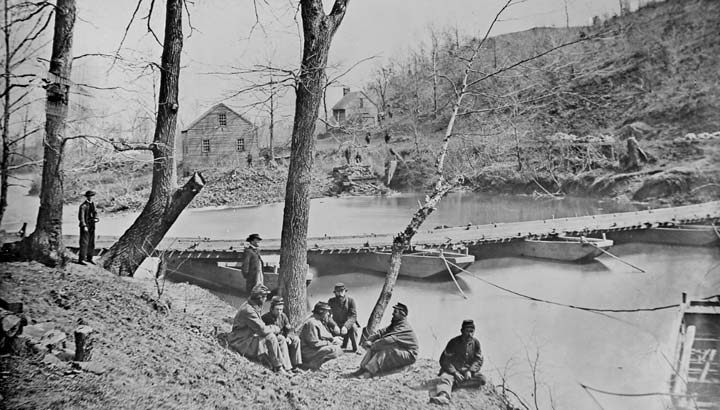 Blackburn's Ford, by Matthew Brady. The following is from the History of the 39th MA titled, “The Thirty-Ninth Massachusetts Regiment; 1862 - 1865”; by Alfred S. Row, Worcester, Mass., 1914. [October 14, 1863] It was a four o’clock call of the bugle, in the morning of the 14th, that summoned frost covered and sleepy soldiers from dreams to realities, but their distress was somewhat offset by the appearance of rations, of which they drew supplies for four days and thereby were better equipped for the day’s progress which began at seven o’clock, as one veracious chronicler states, with the First Corps on the left and the Sixth at the right of the railroad. While these two Army Corps were thus continuing their way in relative quiet, heavy firing in the rear indicated that the Second and Fifth corps were having something to do, the Second fighting the battle of Bristoe Station; General Warren having his hands full in warding off the attack of the enemy while the cavalry, on both sides, were piling up the portentous list of battles, many of them bloodless, which adorn the histories of so many mounted regiments. Centreville, so famous in the July days of 1861, was now the evident destination of the forces and crossing Bull Run, at Blackburn’s Ford, the scene of the first day’s fight in the memorable First Bull Run engagement, the brigade arrived at Centreville not far from noon. To build fires and to prepare a dinner, undisturbed, was the next act in this day’s drama and, if tired soldiers caught a few hours sleep before the next scene, it need not be wondered at. Some of the men in the Thirty-ninth were participants in the disastrous battle of Bull Run; to them it was a case of old scenes revisited, and if they took some pride in rehearsing their experiences they did not fail of interested listeners. But the day was by no means done; though
Centreville had been reached,
the enemy was still near, only a little way to the west, and picket
lines must be established. Accordingly the Regiment proceeded on
its somewhat confusing task, while the greater part of the division
went
on a reconnoisance. The dawn of the morning of the 15th did not reveal the situation with certainty to these inexperienced soldiers; they knew that they were very near the thrilling scenes of more than one and two years before, that the sound of musketry and cannon-firing in their front indicated the possibility of a third battle of Bull Run. It was theirs, however, to watch and wait in constant expectation of orders to lend a hand. One writer enlarges on the delights of persimmon-eating, the October frosts having ripened the yellow delicacy to perfection, and the various other diversions that unoccupied hours ever suggest. Though the brigade was finally rejoined and there was a movement towards Centreville with orders to pitch tents, before the same could be obeyed a long threatened rain began to fall, putting out whatever fires had been built and essentially adding to the discomforts and uncertainties of the day. Rations were drawn late at night and record is made of the giving out of a portion of whiskey as a stimulant to the wet and weary solders.  Adolph Metzner sketch, LOC. The experiences of the 16th and 17th did not vary essentially from those of the 15th; there were picket duty, acting as reserve, the drawing of rations and all sorts of prognostications as to what the outcome of the expedition would be. While the cavalry of both sides kept up an exchange of compliments, very few casualties were reported from any source. That those who directed believed there was immediate danger was evident in the degree of caution constantly maintained; roll-call every two hours and constant injunctions to be ready to move at any moment. Union Army at Centreville, August 1863  Robert Knox Sneden did this sketch titled, “Eastern View of Centreville, Va., From Cub Run”, showing the village of Centreville atop the hill with Cub Run in the foreground. The distance between the two was estimated to be about 3 miles. From “Three Years in the Army, The Story of the
Thirteenth Massachusetts Volunteers” by Charles E. Davis, Jr.
(Boston,
Estes & Lauriat, 1894). Diary of Sam Webster (drum corps): 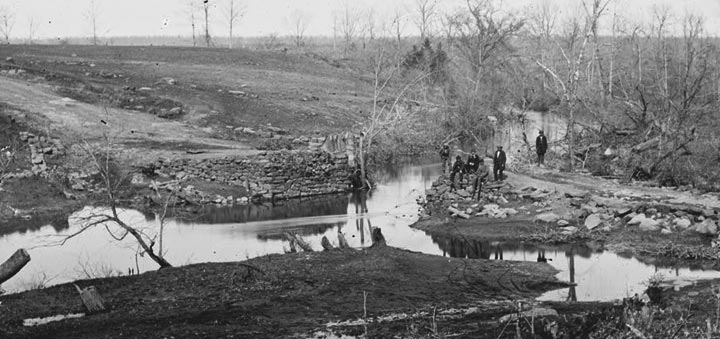 Cub Run, Virginia, View with destroyed bridge, March, 1862 , by George N. Barnard. 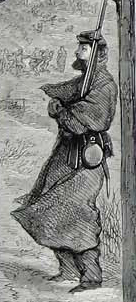
Diary of Calvin Conant: Friday, 16; morning all quiet damp day rained last night we drawed 4 days rations which makes 9 now on hand, drawer Whiskey half of the Regiment went on Picket –– rains hard and the wind blows. October, Saturday 17; Bright & Clear this Morning last night was a rough one it rained very hard & the wind blowed hard and a good many tents were blowed down I slept with Sargt – Spencer we had a double tent and slept dry & cosy all night my Partner is on Pickett [Sergeant Spencer is: JOHN W. SPENCER; age, 24; born, Berwick, Me.; carpenter; mustered in as priv., Co. G, July 16, '61; mustered out as sergt., Aug. I, '64; residence, Stoneham, Mass.] Sunday, 18; All quiet went out & discharged our guns very warm & pleasant day had a good Bathe (get rid of bad powder) Diary of Sam Webster, (drum corps): Lt. Col. Batchelder has not got his “fixings” and very generously occupies the best part of tent of Sawyer and myself. Draw three (making nine) days rations. Sunday, October 18th. History of the 39 Mass., cont'd:
From the foregoing it would seem that only the Confederate cavalry had been responsible for the Federal activity in and about the old Bull Run battlefields, and now even the horsemen were to follow the foot forces and the Union troops would again move west and southward. Repercussions of the terrible battle of Gettysburg were still felt in October, 1863, as the following newsclip demonstrates. OCTOBER 17, 1863 THIRTEENTH MASSACHUSETTS FUNERAL OF A SOLDIER.––The funeral services over the remains of John S. Fiske, Co. C, 13th Reg't. Mass. Vols., who was killed at the battle of Gettysburg, July 1st, was held at the house of John F. Fenno, Esq., at North Chelsea, on Tuesday forenoon last. He was the first volunteer from North Chelsea, and Serg't. Cody of his Reg't., in writing the particulars of his death, said, “Our much beloved and esteemed friend, and brave comrade, was wounded in a glorious cause, and died nobly defending the stars and stripes, and doing his part to restore this once glorious Union.” [Chelsea Telegraph and Pioneer; October 17, 1863; pg. 2, col. 3.] Re-cap of the Bristoe Campaign The following article in the Boston Transcript, gives a re-cap of the Bristoe Campaign from the Union perspective. I have placed this campaign map here, which shows locations mentioned in the article, in hopes that it will be easier to follow along. Some of the engagements of the campaign are indicated with yellow battle stars. The 13th Mass began the march from Morton's Ford. For a more complete overview of the campaign, see the Bristoe Campaign page of this website. Click here to view the map larger. 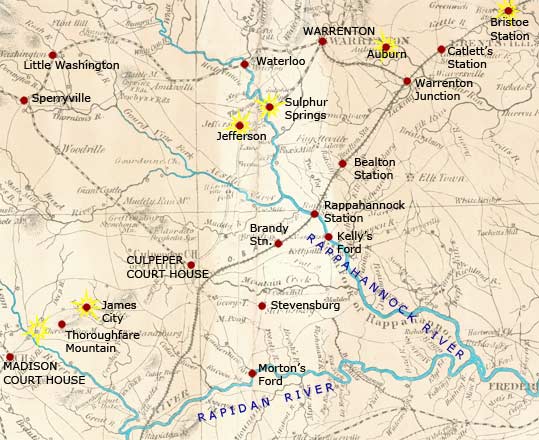 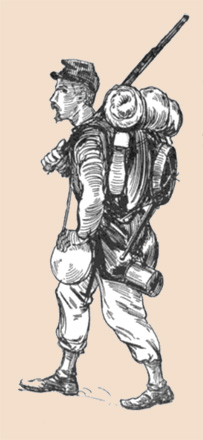 Boston Evening Transcript, October 20, 1863 FROM THE ARMY OF THE POTOMAC ––––––––––––––––––––––––––––––– Interesting History of Recent Movements. ––––––––––––––––––––––––––––- New York, 19th. The following letter has been received from the army. Centreville, 17th. It is pretty evident now that it was Lee’s intention to make a grand raid in the rear of our army, cutting off railroad communication with Washington by destroying the bridges, securing supplies for his half famished troops and horses by seizing scattered wagon trains, and then by rapid evolutions, throwing his main force on different points, and demoralize and destroy Gen. Meade’s army in detail. On Saturday last, [Oct 10] when Lee’s flank movement was discovered, Gen. Meade ordered a rear movement east of the Rappahannock from Culpepper. Kilpatrick’s and Buford’s cavalry divisions, with infantry supports, covered our rear. At this time Hill’s rebel corps had advanced by way of Sperryville and Little Washington on our north flank toward Warrenton via Waterloo. Our rearward movement commenced at daybreak Sunday morning, and the army reached the rear bank of the Rappahannock the same afternoon. Finding that Ewell’s corps had not pushed us to the river on Monday, General Meade sent three corps and Buford’s cavalry on a reconnoissance over the Rappahannock toward Culpepper, and found no heavy force there. Lee, in the meantime, had pushed his main column toward Warrenton, in the hope of executing his well-planned moves upon our rear, but our reconnoissance toward Culpepper led him to believe it was General Meade’s intention to get in his rear. He therefore halted his army and took position to give a defensive fight. Up to this time Lee had the decided advantage. He was as near to Washington as Meade, and, unencumbered with trains. He evidently expected to be attacked in force on Tuesday morning, and maintained his post in line of battle until near noon Tuesday, awaiting our advance. Gregg’s cavalry division had retarded Stuart’s advance over the Rappahannock during Monday, and although compelled to fall back from the river, prevented the continued and prompt advance of the rebel cavalry to destroy the railroad. Quietly, during the reconnoissance of Monday, Gen. Meade had prepared his trains and got them en route rearward, and during Monday he had withdrawn his troops from the Culpepper reconnoissance, destroyed the railroad bridge abutments, and sent pontoons eastward before day-light on Tuesday morning. Sunrise saw the whole army well on their way toward Catlett’s Station and that vicinity, the cavalry and light batteries protecting our rear and right flank. Cannonading and musketry were frequently heard on our now left flank, as bodies of rebel cavalry came down at different points, under the fixed belief that they would reach the railroad and cut our line unopposed They were greatly surprised at finding a force at every point miles from the line of travel to meet and repel them from there. Nor was Lee less mystified and nonplussed when he learned that he had been successfully outgeneraled by Gen. Meade. He pushed on Stuart’s cavalry from the Sulphur Springs upon our rear on Tuesday evening, and rushed forward Hill’s corps at double-quick to support them. Ewell advanced more leisurely. Hill’s troops were double-quicked on Wednesday from Warrenton to Bristoe to support the cavalry and light batteries who were engaged in the vain endeavor to cut off our rear guard. The result of their efforts has been heretofore stated. The gallant and indomitable Warren gave them battle and a lesson in the history of the war not easily forgotten. On Wednesday night we had recrossed Bull Run and formed a line, front to the enemy, from Chantilly on the north to Wolf Run shoals on the south. Not a farthing’s worth of property had been abandoned or destroyed by the enemy out of millions of dollars worth transported from Culpepper, nearly sixty miles in three days. At this hour, Lee having been foiled in his grand endeavor to annihilate Gen. Meade, has now fallen back toward the Rappahannock, discomfited, dejected, disgusted. A heavy reconnoissance is again advancing in that direction, and from the heights of Centreville, where I am now writing, can be heard our guns announcing that we have met the rebel outposts. Let me relate a fact which has a very important bearing on the conscripts of the army. When General Warren was attacked at Bristoe, he threw his infantry from the hill south of the road down through the swampy ground, and ensconced them along the embankment of the railroad under a shower of shell and musketry. The raw conscripts, and there were hundreds of them in the command, gave themselves up for lost. Pale and trembling they involuntarily went forward, took position with their comrades and performed their part of the fight. Every whistling rifle ball, every shrieking shell they apprehended was destined to destroy them individually It was beyond their comprehension when told that they had met, charged and beaten a brave enemy in a fierce fight and captured several hundred of Hill’s veterans, five guns, and three standards, beside killing and wounding 100 of the rebels, and come out of the conflict unhurt. Their immediate commanders say that they fought equally well with those of two years experience, exhibiting no signs of fear when the first impulse had passed. And now to change gears a little, a story of camp life. This story comes from the memoirs of Sergeant Austin C. Stearns, “Three Years in Company K” edited by Arthur Kent, Associated University Presses, 1976. 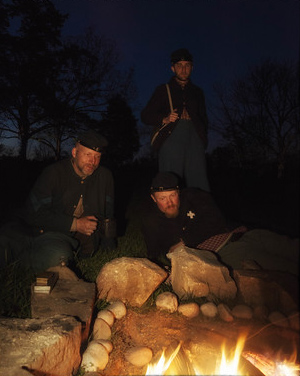
Amongst the Subs was a Frenchman who was a sweet singer, and many were the nights we used to sit and hear him sing; he always sang in French. One cold night after a hard days march we had made our coffee and were sitting around our camp fire smoking. We got Frenchy to sing. The Marseillaise Hymn was a great favorite with us, and Frenchy could sing it in a way that only a Frenchman can. I don't know whether it was in the air or what it was, but we all said we never heard sweeter singing than on that cold and clear evening in October. Before he had finished one verse the regiment began to gather around and as he proceeded the men from other regiments came, and soon we had nearly the entire brigade around our little fire. After [his] singing a song or two, the Colonel sent for him to come to headquarters, and Frenchy was there singing when I went to sleep. We stayed here a few days and then marched towards Thoroughfare Gap. When we marched away, Frenchy’s gun and knapsack were there but no Frenchy; he had deserted [and] we never heard his sweet singing again. Crossing the battlefield of the 2d Bull Run, I noticed many familiar objects but, not stopping. I had not as much time to look around as I wished. As we passed a tree, a grinning skull protruded from the ground — some poor fellow hastily buried and the rain had washed the earth away. Photo by Buddy Secor. NOTE: There are two possibilities for the identity of the drafted man, "Frenchy." They are: Private Robert Rapp, age 28, born, France, Occupation: Painter, Enlistment credited to Northridge, mustered in: July 24, 1863; deserted October 24, 1863. The other candidate among the Company K drafted recruits is, Private Edmund Treatest, age 30, born, France, occupation: Sailmaker, enlistment credited to Worcester, MA; mustered in: July 24, 1863; deserted October 19, 1863. The date and occupation favor Treatest as the best guess for Austin Stearns "Frenchy." March to Thoroughfare Gap; October 19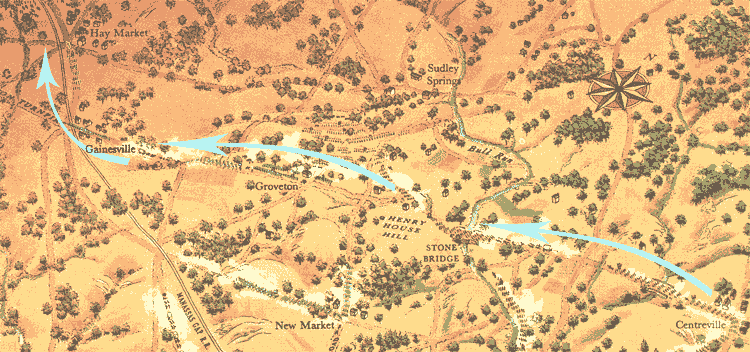 American Heritage published a wonderfully illustrated book on the Civil War in 1960 with a narrative by famed Civil War author Bruce Catton. I received a somewhat mouldy copy of the book as a gift from a friendly neighbor some years ago. One of my favorite features of the volume is the graphic illustrated maps of major battles. Although it is not advisable to lift images from old books, I liked this graphic map so much, I manipulated it, and cropped it to show the relationship of the Bull Run Battlefield, and the Stone Bridge to Centreville, Gainesville, and Hay Market. This is the route that Gen. John Newton's First Corps followed to Thoroughfare Gap, which is just above Hay Market, on October 19th & 20th, 1863. Rebel General J.E.B. Stuart was at Hay Market foraging for his cavalry on the 18th. History of the 39 Mass., cont'd: Starting at about eight o’clock, the route was along the Warrenton turnpike, the very road, so prominent in all accounts of the two Bull Run fields, with the sad sights of only partially covered bodies of those who had perished in the engagements; the severe rain was constantly adding to the heaviness of the way and Thoroughfare Gap, the reputed destination of the march, seemed a very long distance off.  The vicinity of Haymarket on the Manassas Gap Railroad was reached about 4 p.m. and the noise ahead indicated a fear that the enemy was there in force, our artillery keeping up a vigorous shelling of what was thought to be the rebel position. Camps were made and tents pitched only to have the vexatious order “Pack up” given just as we were disposed to get a bit of rest. Rations, too, were scarce and everything combined to make the day and night particularly trying; at 3.30 p.m. or thereabouts of the 20th an advance was made through Thoroughfare Gap, though there were those who thought “No Thoroughfare,” on account of the difficulties of the way, would be a better designation. 
Diary of Calvin Conant: My Shoes are all out. We brewed fresh Beef Pickets just relieved today this Morning as we marched. From “Three Years in the Army,” by
Charles
E. Davis, Jr.; Since our last visit to Hay Market the entire town, with the exception of a church, had been burnt by order of General Stahl, it is said, as a punishment to the inhabitants for firing on Union troops. 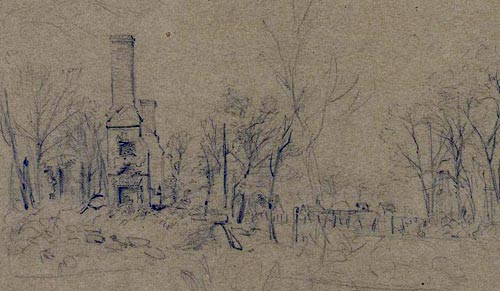
As we were going into camp General Stuart made a dash on to our picket line, capturing some pickets, besides killing two or three. In consequence thereof we were kept under arms all night. Artist A. R. Waud sketched this rough image of Haymarket in 1863 after it was burned. The loose sketch suggests the remains of several burnt structures, right left and center. Diary of Sam Webster: The Journal of Charles Wainwright, 1st Corps Chief of Artillery It is remarkable that Colonel Wainwright made the time to continually update his journal with lengthy detailed entries. The information is tip-top as Calvin Conant of the 13th MA would say. 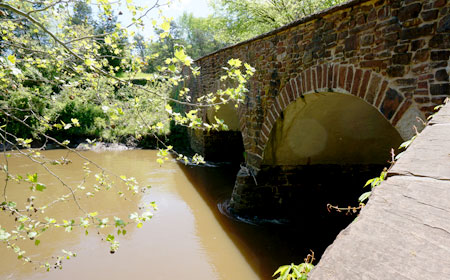
Haymarket, October 19, Monday. My greatest surprise is that, once defeated our army was not annihilated; for there was only the one narrow, high bridge, and no ford near. Neither can I see why we should have fought at all at this point last year, instead of allaying back to Centreville. Captain Cooper tells me that even the wagons were not sent over the run until it was known that the fight was going against us. He describes the whole flat south of the bridge as jammed full of artillery, waggons, and ambulances at the time the retreat commenced; while the enemy had possession of the bluff down the steam, and batteries on it which commanded every part of it. The more I learn of Pope’s campaign, the more thankful I feel that I escaped taking any part in it. [Bull Run Battlefield pictured below. Robinson's 2nd Division was marching along the Warrenton Turnpike in front of the Stone House, pictured.] We kept on the Warrenton road until we reached the Manassas Branch Railroad and then turned off to this place. Kilpatrick’s Div. of Cavalry was ahead of us, some distance, so we marched over fifteen miles undisturbed getting in about Sundown. 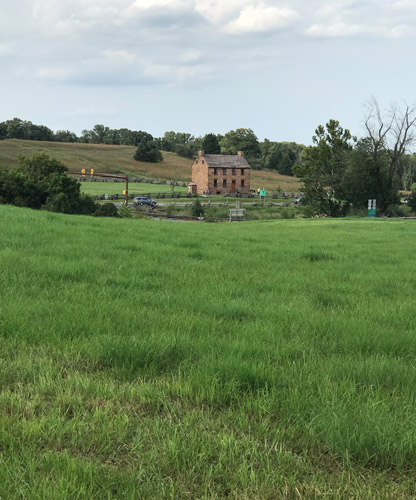
Haymarket a year ago must have been rather a pretty little village of half a dozen houses, pleasantly situated at the base of some low, wooded hills. But in one of his raids through here at that time Gen’l Stahl burned all the houses on the ground that his column had been fired on from them while passing through. We had just light enough after our arrival to get the troops into position; I placed two art’s (Stewart & Stevens) commanding the road from Thoroughfare Gap; & two more commanding the road coming in from the north. Head quarters were on a knoll just south of the road we had come in by. Very soon after we got here an orderly of Gen’l Davies, who commands one of Kilpatrick’s brigades came in, & reported that Kilpatrick had driven the rebel cavalry as far as New Baltimore; that there the enemy had been reinforced & had cut off Davies brigade, so as to isolate it from any part of our army. The 1st Brig. 1st Div was at once ordered out in that direction (south west). They had been gone half an hour when Davies’ men came in helter skelter by the Thoroughfare gap road, the rebels mixed up with them. In fact some of the enemy were ahead, who running upon our pickets, did not distinguish them in the dark from the cavalry, & fired. Our picket line had not been pushed out as far as it should have been, & at this point was composed mainly of conscripts who ran in at once, the rebs following right on to Stewarts guns. Lt Mitchell, on finding the enemy so near & their balls falling in showers among his guns, let fly a volley of cannister into them or rather into the darkness where he thought they were. This opened their eyes as to what they had run afoul of, so they cleared out. We were just sitting down to supper at the time, when without warning Mitchell fired all his guns; they were not over 500 yds from us, the sudden flash, & loud reports therefore gave us all a terrible start, the whole thing came very near being a bad stampede. By the time I had mounted & ridden out the spot Davies’ men were coming in while Elder’s horse Batt’y, which was with them, had gone into position some 300 yds to the front, & was firing in a most lively manner; for effect I suppose, as there was nothing visible to fire at. Davis came in with his men, & soon after Kilpatrick brought the rest of his command in by the New Baltimore road. As they talk the matter over at H’d Qts, it appeared to me as if there had been very bad management on Kilpatrick’s part; but it is hard work to provide against such surprises in this wild, wooded country. –– As I turn in all is quiet, the cavalry are within our lines, but the Brigade sent out to aid them has not returned.  Thoroughfare Gap; Tuesday, Oct 20th –– Our total loss in the Corps last night was 3 killed, 6 wounded & some 50 missing. Kilpatrick may have lost a couple of hundred altogether; probably more. He has gone to the rear to day & Buford passed out ahead of us this morning. He is an infinitely better officer, & I for one feel as if things were much more likely to be done in a soldierly manner.-–– In the afternoon we followed through the [gap], & are now in position on the west side. Thoroughfare Gap in the Bull Run Mountains is a short, narrow passage not wide enough for all its three occupants, a railroad, stream and common road, so that in places the last runs along the bed of the stream; and at all points is narrow, rough and rocky. The hills on either side are not high but wooded from base to summit. Here we have a very good position on an open ridge which forces a sort of amphitheater around the opening to the Gap on this side. The day has been wet again; consequently our camp ground is wet and soppy. The wagons remained on the others side of the gap. THE BUCKLAND RACES At 3 p.m. October 18th, General Kilpatrick’s 3rd Cavalry Division moved out on the Warrenton Turnpike searching for enemy infantry. The 1st Vermont Cavalry of General Custer’s brigade pushed enemy cavalry pickets out of Gainesville, where the entire division bivouacked for the night. That evening, General Meade ordered the 1st Corps, General Newton, to march the next day to Hay Market in support of Kilpatrick’s cavalry. J.E.B. Stuart was at Haymarket on the 18th, foraging. The pickets at Gainesville alerted Stuart of Kilpatrick’s advance. Hoping to catch Kilpatrick off-guard, and inflict some damage, General Stuart sent a message to Brigadier-General Henry Fitz-Lee’s cavalry division, then bivouacked around Auburn, to ride to his support. Stuart then crossed his division to the south side of Broad Run at Buckland. General Stuart reported the situation:
Young General George Armstrong Custer’s brigade took the lead of Kilpatrick's two brigades, Monday morning, the 19th of October. Kilpatrick's 3rd Brigade was held in reserve. General Custer wrote:
Custer left out that he and his staff rode too close to the bridge at Broad Run and was nearly killed by a well aimed Confederate shell.* The entourage quickly departed for the rear and continued issuing orders. Repeated attempts to take the bridge head-on failed. Thats when the flank movement was put into play. Troopers crossed Broad Run on both sides of Stuart's line to get around his flank. This eventually caused the Confederates to fall back toward Warrenton. But all was not as it seemed. General Stuart continues:
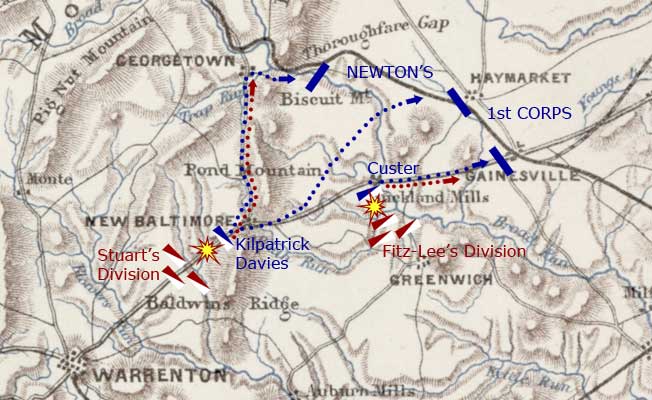 After taking the bridge over Broad Run at Buckland Mills, Custer's men halted to have breakfast. Kilpatrick pursued Stuart down the Warrenton Pike. Click here to view map larger. Stuart withdrew slowly. General Kilpatrick obligingly stepped into the trap. After a short rest he ordered his two brigades, forward in pursuit of the enemy's cavalry. Kilpatrick rode out with Brigadier-General Henry Davies Brigade, but General Custer refused to follow until his men, who had been fighting all morning, rested and had their breakfast.** This proved fortuitous for Kilpatrick. FItz-Lee’s cavalry arrived on the scene just as Custer’s men were beginning to move out. They quickly re-formed to protect the bridge over Broad Run at Buckland which was Kilpatrick’s escape route. A heated engagement began. Custer reported:
Both sides brought up artillery but a mile long line of dismounted Confederate Cavalry continued to advance and put intense pressure on Custer's guns.
The battle sounds at Buckland was Stuart’s signal to turn on his pursuers. Stuart described the rout of Kilpatrick’s cavalry:
 Confederate Cavalry continued the pursuit of Kilpatrick's cavalrymen to Gainesville and Haymarket where they encountered Union First Corps Infantry. Stuart's report continued:
To hide the embarrassment over the complete disorganized route of his division, General Kilpatrick and General Custer claimed it was enemy cavalry supported by infantry that drove them back. This led General Meade to believe Lee’s Army was in force at Warrenton. Consequently he ordered a cautious advance in that direction which took two days to complete. Meanwhile, Lee’s army crossed the Rappahannock River unmolested. NOTES: *James Harvey Kidd, "Personal Recollections of a Cavalryman" (p. 212-215) is cited in Gottfried, p. 80, Noter 10; "The Maps of the Bristoe Station and Mine Run Campaigns." [See sources secton on this page.] **Robert J. Trout, "After Gettysburg: Cavalry Operation in the Eastern Theater, July 14, 1862 to December 31, 1862.: Hamilton, MT: Eagle Editions, Ltd., 2011. This is cited in Gottfried, p. 80, Note 12; "The Maps of the Bristoe Station and Mine Run Campaigns." [See sources secton above, on this page.] Diary of Sam Webster: 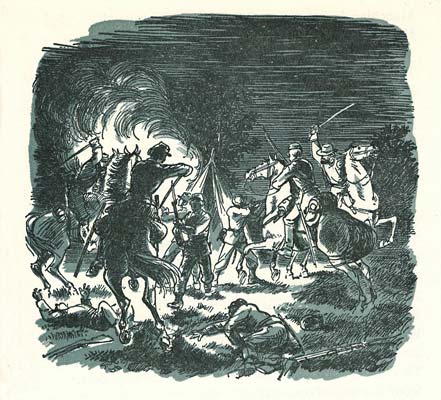 A glass showed them to be rebels; upon which he ordered his wagons forward through the Gap to the east side. As they moved slowly (and the rebels intended to get into him,) as soon as he got them fairly into the Gap, he put a couple of shells over their heads which accelerated their pace wonderfully. The rebels came down on him, following on through the Gap. The Seventh Maryland was on piquet, and not connected with the pickets of the 1st division. As the cavalry came to the rear right lively the rebels followed them up, and some of them (the rebels) got to the rear of Colonel Webster’s line and into his reserve, killing and wounding several, and taking about 15 prisoners. The Colonel himself had a narrow escape. The men were continually calling him, the night being very dark. The rebels hearing it took up the cry, and at last he answered one of them, who was quite close, the Johnnie replying with a shot. Saw John Carr, today, of Russell’s Company 1st Maryland Cavalry. His horse was pretty well “played.” Moved about 4 p.m. through the Gap, and camped on the hill. It was made a right hard march for us though the distance was short. We didn’t cross the stream — east of the mountain — until after dark, and it was quite tedious getting over on the west side after dark and climbing a high hill. [His field diary adds: “Rather hard for so short a march only 5 miles.”] From “Three Years in the Army,” Charles
E. Davis, Jr.: Diary of Calvin Conant, Company G: 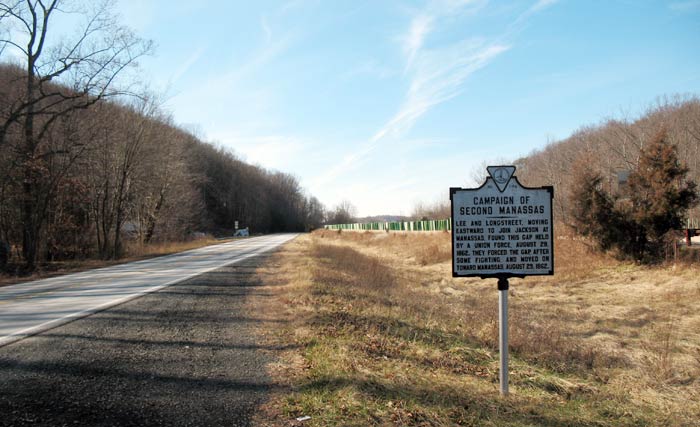 Pictured is the East side of Thoroughfare Gap, looking west along modern hiway 50. Chapman's Mill is directly to the right of this view, but it is across modern interstate 66 and very difficult to photograph well. Photo taken, February 2012. As the soldiers noted, the recent heavy rain made the roads difficult to travel. General John Newton's Report of the Fight at Thoroughfare Report of Maj. Gen. John Newton, U. S. Army, commanding First Army Corps, of skirmish at Hay Market. Headquarters
First Army Corps, General : I have the honor to forward herewith my report of the skirmish at Hay Market. I have not hitherto considered it necessary to make any official mention of an affair with which my command had so little to do, but so much has lately been published about it, that I feel it incumbent on me to state the circumstances, and let blame, if any, fall where it is due. My command was stretched along the road from Gainesville to Thoroughfare Gap, communicating by pickets on the cross-roads with the Warrenton pike. Immediately upon receiving notice from General Kilpatrick of the pressure upon him, and which was reported to me to be cavalry strongly supported by infantry, I sent the First Brigade, First Division of this corps, commanded by Col. W. W. Robinson, out toward the Warrenton pike, and succeeded in preserving one brigade ( I think Custer’s), which was being driven in from that road. General Kilpatrick’s main body came in on the road from Thoroughfare Gap in great confusion. 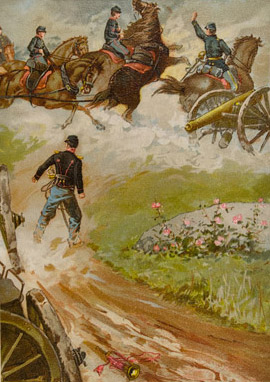
My pickets allowed our cavalry to pass through them, and attempted to repel that of the enemy, but being unfortunately but necessarily posted in the open ground, they were overborne, and driven in on the road from Thoroughfare Gap. My command was promptly under arms to repel attack, and the One hundred and forty-third Pennsylvania Regiment (Colonel Dana), of the Third Division, was ordered forward to support Elder’s battery, which went into position and opened fire upon the enemy about 400 yards in advance of my line of battle. This was about 7.30 p.m. The enemy picketed in front of my line until about midnight, when they retired. In conclusion, I have to regret that my losss in killed, wounded, and prisoners amounted to about 50, most of the latter being lost through the misconduct of an officer of the pickets, who has since been dismissed the service on that acount. Very respectfully, your obedient servant, JOHN NEWTON, Brig. Gen. S. Williams, General Custer by Clarence Bell, July, 1884. This story is an exerpt from Clarence Bell's article titled “Frills”, published in Bivouac Magazine, August 1884. Although the fight at Buckland is probably a low point in General Custer's career, (his baggage wagon was captured when Davies' Brigade was routed, and his personal love letters were published in the Richmond newspapers to embarass him) the soldiers in the 13th MA were part of the re-enforcements he encountered when he rode to safety, and there is a good chance they saw him. Therefore, this is as good a place as any to include this remembrance of the flamboyant general. He is pictured here as a Major-General. He was still a brigadier when the events at Buckland occurred. 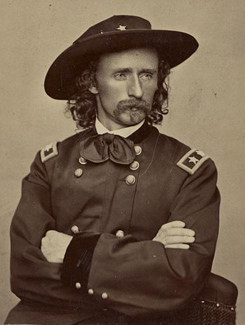
Everyone that served in the Eastern army must remember the dashing cavalry general in the velvet jacket. Always the same, faultless in attire, elegant in horsemanship; as he passed by, the soldiers gazed after him with admiration and envy. He seemed to be all “frills”––dress, movement, and general appearance. You could have taken him without a change in apparel, from the field, to the most polished assemblage in civil life, and he would have been an ornament in either place. How our hearts thrilled as we saw him galloping across the country, taking a stone wall or a rail fence, flying; horse and rider seeming to be a single organization; his light hair floating in the breeze, and his cap, profusely ornamented with golden cord, set jauntily on the side of his head. Under all circumstances, rain or shine, you found him “dressed to kill.” It seemed as if a whole wagon train was necessary to the transport of his wardrobe. One thing more than all else endeared him to the hearts of the infantrymen–– he always recognized human beings in the dust-covered musket-bearers who dragged their weary way along over the dilapidated and narrow roads of Virginia. To a man that but a few moments before had scrambled up a steep bank to escape being crushed beneath the hoofs of the horse of an up-start-lieutenant, that owed his position on the staff of a brigadier to the wealth of his family, it seemed like a revelation of another order of beings to see a general officer invariably take to the open country, rather than to disturb or discommode the infantry column in the natural thoroughfare. No matter how foppish he might appear, no sneer or expression of disdain was ever heard as he rode along. We might be drenched with mud, or ragged and shoeless, yet there was one in the Army of the Potomac always dressed up, and that one was Genral Custer. How the enthusiasm glowed at his achievements––now some brilliant charge ––then, a daring raid –– his fame broadening with every campaign. We claimed his exploits as belonging to the entire army, and the fact that among its members was the “Flower of American Chivalry,” reflected honor upon us all. Ah ! how our hearts saddened in those July days of 1876, when we heard the sad news of Custer’s death. Clarence H. Bell Boston Evening Transcript, October 28, 1863; Letter from CLARENCE With time to rest after the hard marches of the late campaign, 13th MA correspondent Clarence catches up with his readers, with news of the past two weeks. Correspondent CLARENCE may indeed be Clarence Bell, Company D, who authored the article above. The writing style is similar. BOSTON EVENING TRANSCRIPT 1st Brigade, 2d Division, 1st
Army Corps, Letter From The Thirteenth Regiment. Since we occupied a position on the Rapidan, we have travelled many miles, and taken part in a very interesting campaign, the result of which has been, that Gen. Meade thwarted the rebel commander’s plans, and has shown his signal ability to successfully lead the Potomac Army. I will endeavor to give a general outline of our movements since leaving the Rapidan. Late on Friday night, the 9th inst., we
received orders to march, and at two o’clock, Saturday, we were on the
road. As I had nothing for a pillow, I appropriated a bag of oats laying near. This was “splendid,” and I snoozed comfortably for a long time. We marched till twelve, arriving at Stephensburg after traveling a distance of ten miles. Here we rested till ten A.M. Sunday, when we again began the retreat, marching all day, and arriving at the Rappahannock at dusk, near Kellly’s Ford. On the bank of the river an ambulance, broken down, was blazing, having been set on fire to prevent its being of service to the rebels. 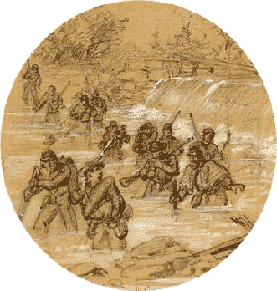
There being but one pontoon bridge laid, the Second Division was obliged to ford the river, the water being two feet deep. We remained at the ford till two A.M. Tuesday, the 13th inst., when we started again. Our teams had safely arrived at Bealton on Sunday, and were on the move toward the North. We traveled all day, arriving at Warrenton Junction when two corps formed a battle line, expecting an attack from the enemy but after a stop of an hour, no enemy appearing, the corps again moved, arriving at Bristoe at eight P.M. At daybreak we again went on and marched ten miles to the fortifications at Centreville. From the heights the scene was truly beautiful. Far away over the plains of Manassas the long dark lines of troops and the white lines of wagons could be seen, all pouring in toward Centreville. The troops, as fast as they arrived took position in the hills, while the wagons were massed in the rear in immense parks.  Edwin Forbes sketch, Centreville, 1862 After dinner the Second Division was sent out on the Bull Run road, and took position on Cub Run. We left Cub Run at daybreak on the 19th inst., and marched westward, crossing Bull Run at the Stone Bridge, and passing on over the battle field. Along the road, before reaching the Run, were scattered large numbers of unexploded shells and pieces of caissons and artillery wheels, many bearing marks of fire. Just in the road, near the bridge, lay a human soul, broken and covered with mud. On the field, the scene was sad and sickening. The bodies of the fallen were never perfectly buried, and the crows and buzzards had scratched the loose covering of earth from the mound, leaving the skeletons exposed to the gaze of passers by. Around the numerous graves scraps of cloth, equipments and broken guns betokened the fierceness of the conflict. At one point, in a grove of oak trees, the bodies of the dead were covered with stones, and many of these being displaced, the whole frames of the dead were shown partially enveloped in blue rags, signifying the last resting place of the Union soldier. The shattered trunks of trees, with numerous branches scattered over the rocky mounds, showed a severe artillery fire. It seemed almost a sacrilege to see these remains bleaching beneath the sun, and handled by those, still moving in the scenes in which they once moved, and fighting for the country, for the preservation of which those men had laid down their lives. Almost forgotten by the friends of the Union, their memories shall be forever fresh in the hearts of their loving comrades.  We arrived at Haymarket, on the Manassas Rail road, at 5 P.M. on the 19th, and encamped in line of battle, having marched eleven miles. In consequence of the continual alarm among the pickets, causing repeated discharges of musketry, the entire Division was kept under arms, and the amount of sleep obtained that night was of very little benefit, but during the morning of the 20th, as no movement was made the loss of sleep was amply made up. In the afternoon we began the march to our present position passing through Thoroughfare Gap in the dark, making a march of seven miles. We are now settled in camp, and our correspondence with friends in Boston will be again resumed. CLARENCE Photograph of Thoroughfare Gap from the west side looking east. 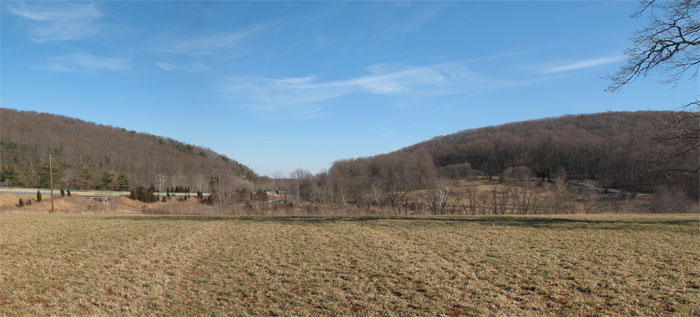 Pictured is the west side of Thoroughfare Gap. The north side of the gap is on the left. Photo taken February, 2012. It is very difficult to capture a good image of the gap, as an elevated Interstate 66 runs through the pass, as seen here. An older road parallels I-66 on the south side. Diary of Sam Webster: 
Diary of Calvin Conant: Thursday, 22; we are in Camp it is a warm day and had Battalion drill this afternoon under Capt Cary [Captain William Howard Cary, Company G, pictured.] October 23, Friday; Cool but pleasant our Captain — bought — Bread enough to make the boys 8 days rations Cold out looks like rain I am drawed Clothes Diary of Sam Webster: Friday,
October 23rd, 1863; Note: I have information on Sam's relative from the book, “Maryland's Blue & Gray,” by Kevin Conley Ruffner, 1997, Louisiana State University Press. Joseph P. Webster, Born at Bel Air, Hartford County, Maryland, September 26, 1835. Occupaton: farmer. Height: 5'11", light complexion, brown hair, gray eyes. Enlisted as private in Company C, 7th Maryland Infantry Regiment, at Bel Air, August 18, 1862. Appointed 2nd Lieutenant, September 9, 1862. Discharged for ruptured veins in stomach and testicles January 1, 1864. Married Laura C. Mitchell at St. John's Protestant Episcopal Church in Havre de Grace, January 7, 1874. No children. She apparently died before Webster. He died in Baltimore, August 13, 1915. 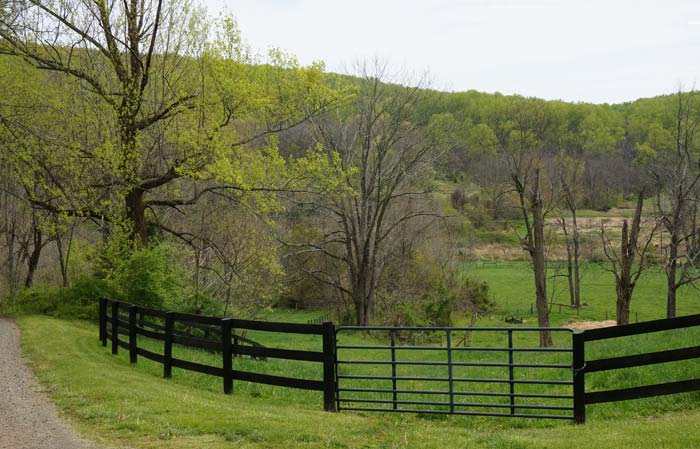 Pictured is a closeup view of the southwest side of Thoroughfare Gap. This farm road is very close to the entrance of the Gap on the west side. Photographed April, 2021. Letter of Private Albert Church Brown, 16th Maine Sometimes its worth a glance into the letters and histories from the 13th Mass' sister regiments, especially during this middle war period where source material from the regiment grows thin. Both Warren Freeman of Company A, and Sam Webster of Company D, 13th MA, state that there are only 9 or 10 original members of the respective companies left, that are serving in the field. The rest are in hospitals or on detached duty. Some will return, but not a lot. The rest of the numbers are made up of conscripts, most of a dubious character. This is emphasized again in the November 25th entry of the regimental history. (To be posted on a future page). In this case, Albert C. Brown was a recently arrived conscript in the 16th Maine Regiment. Brown, age 20, was mustered into Company C, 16th Maine Infantry on August 15, 1863. He reached his regiment on October 10th. So at the time this letter was written to his aunt, he had only been in the field 13 days. Albert would survive his war-time service, and live until 1922. Camp near Thorofare Gap Va Oct 23d ’63. Dear Aunt, I received your letter last evening and was very glad to hear from you. I am going to commence to answer it this morning but whether I shall have time to finish it remains to be seen. Instead of remaining where we were the night after I wrote my last letter to you, as I expected, about dark we received orders to start again & marched till two or three o’clock the next morning. Since then we have been on the move pretty much all of the time—part of the time following the Rebs and part of the time they have been following us. Our Corps has been in no engagement yet, although we have been so near it that we have heard cannonading all around us nearly everyday for the last week. Whenever we have halted we were drawn up in line of battle so as to be ready in case of an attack. We arrived at the place where we are encamped at present Wednesday night. Just before we reached this place we passed through a run between some mountains called Thoroughfare Gap. We had some climbing and wading to do but got through safely. The weather has been pleasant most of the time since we came here. We have had some rain and the roads are getting to be a little muddy in some places. There is some talk of going into winter quarters before long. When we do, we will be likely to have easier times. My health is good yet accepting a slight cold which I suppose I contracted by sleeping on the ground. I have had plenty to eat, drink, and wear so far & I guess as a general thing, Uncle Sam takes pretty good care of his soldiers. I have had no letter from home since I wrote to you before. I am looking for one every mail now. I don’t know as I have anything more to write at present. Write as soon as you can. Give my love to all hands and accept a share yourself. From your nephew — Albert C. Brown, Esqr. Sergeant Austin Stearns Reminiscent of the Camp at Thoroughfare Gap Sergeant Stearns tells a tale of the soldiers' love for tobacco, from the camp at Thoroughfare Gap. The sister regiment, 16th Maine, is once again mentioned. From “Three Years in Company K” by Sergeant Austin C. Stearns, (deceased) edited by Arthur Kent, Associated University Presses, 1976. The Sutler had not been with us since leaving the Rapidan, consequently tobacco was very scarce with us and those who were fortunate enough to possess the article could get promises to pay of fabulous sums. I had a very small piece about an inch square that I had carefully guarded and used very sparingly. One day, being on brigade guard and not thinking but what the other regiments had tobacco in plenty, I filled my pipe and was commencing to smoke, when a crowd of 16th Maine boys all [began] saying “Cant you give me a small piece? I haven’t had a chew for three days,” or, “I haven’t smoked for a week.” I could not resist their appeals, so giving all I had with me to the Corporal, told him to divide. Jordan, who was detailed as cook for the Colonel, came
to me and said if he had some money he knew where he could buy some of
a teamster. Money was almost if not quite as scarce as
tobacco. I had a little money, but not wishing to part with all I
gave him a half dollar, telling him that he could have half that would
buy. He took it and I did not see him for over a week, [and] then
he had no tobacco for me or anyone else. I said nothing to him
about it, [but] I afterwards found out by some of the boys what Jordan
done with my half dollar and after laughed at my expense. Colonel Batchelder had no money or tobacco, and being an inveterate smoker, offered Jordan a fabulous sum if he could find him a piece. Jordan, who was privileged to go back to the teams, found a teamster who had a piece he would sell for cash, but would take no promise to pay, so he came to me, knowing I always had money. He bought the tobacco and gave it to the Colonel, [pictured] and at pay day received his pay and then told the boys of the joke he had played on me. I failed to see where the joke came in and afterwards there was trouble between us. In about a week we moved away, and coming upon the teams, John Hill found a teamster that had a plug of Navy that he would sell for one dollar. He brought the man with him and the tobacco. Hill, Rawson, and Sanborn would each take a piece and pay me at pay day. I was always willing to accommodate, so I paid the dollar and the boys were again happy. NOTE: Jordon is Corporal Samuel Jordan, age 37, born: Maine; Occupation: Wheelright, from Shrewsbury, Mass. Mustered in August 9, 1862, mustered out August 1, 1864 at experation of service. He was one of the captured at Gettysburg. Narration Part II; General Meade's Troubles with President LincolnWe will leave the 13th MA at Thoroughfare Gap for a moment, and the rest of the Army of the Potomac, to briefly look at a rising star in the west; one that would eventually merge into the east and change the character of the war. 
The war in East Tennessee was about to take a positive turn after a brutal setback. On September 19 & 20, 1863, Confederates won a stunning victory at Chickamauga Creek. Casualties were high on both sides; 16,179 Union, & 18,454 Confederate. Major-General William Rosecrans, commanding, brought his battered Union Army to the city of Chattanooga to re-group. Confederate General Braxton Bragg followed them up and laid siege to the city by occupying the high ground all around its eastern and southern perimeter. Rosecrans seemed stunned by the defeat and from appearances, did little as the trapped Union army, cut off from its supplies ran low on rations. The man President Lincoln and Secretary of War Edwin Stanton selected to turn things around was Major-General Ulysses S. Grant, the victor of Fort Henry, Fort Donnelson, Shilo, and Vicksburg. After several creative endeavors to conquer the near impregnable Confederate bastion failed, Major-General Grant privately reasoned out a new daring plan of action and set it in motion. His army moved south of the fortress and crossed the Mississippi river onto the Confederate side, unmolested. This in itself was a notable achievement. Next, the administration in Washington wanted him to swing 100 miles south to co-ordinate an attack on Port Hudson with General N. P. Banks army in Louisiana. But General Banks wasn’t ready. Rather than delay the expedition and give the enemy time to prepare for an attack, as he reasoned, Grant decided to push forward, abandoning his supply base, and make a dash 60 miles east to confront General Joseph Johnston’s Confederate troops at Jackson, Mississippi, the state capital. He then intended to reverse course and turn west from Jackson to attack Gen. Pemberton’s Confederates at Vicksburg. Vicksburg was more vulnerable to attack from the east. Grant wanted to accomplish this in a week, so his army wouldn’t run short of supplies. Grant knew the plan was too risky to gain approval from the authorities in Washington, so he didn’t tell them. When his army of 40,000 men was consolidated on the east side of the Mississippi river below Vicksburg, he set off. Before leaving he telegraphed Halleck in Washington on May 11, “you may not hear from me for several days.” The message would take several days to reach its destination. Grant’s campaign was a tremendous success. He fought 4 decisive battles against 2 Confederate commands within a week, and brought his army to the outskirts of Vicksburg’s eastern perimeter. The city was surrounded. Grants army settled in for a siege. Eventually the city surrendered on July 4, 1863. On July 13th, President Lincoln pronounced Grant's campaign “one of the most brilliant in the world.”1 After Vicksburg fell the President sent General Grant a letter. Executive Mansion, Major General Grant My Dear General I do not remember that you and I ever met personally. I write this now as a grateful acknowledgment for the almost inestimable service you have done the country. I wish to say a word further. When you first rached the vicinity of Vicksburg, I thought you should do, what you finally did –– march the troops across the neck, run the batteries with the transports, and thus go below; and I never had any faith, except a general hope that you knew better than I, that the Yazoo Pass expedition, and the like, could succeed. When you got below, and took Port-Gibson, Grand Gulf, and vicinity, I thought you should go down the river and join Gen. Banks; and when you turned Northward East of the Big Black, I feared it was a mistake. I now wish to make the personal acknowledgement that you were right, and I was wrong. Yours very truly Lincoln, Speeches Letters Miscellaneous Writings, Presidential Massages and Proclamations. 1859 -1865 Vol. II. The Library of America. On October 3rd, Grant received a telegram at Vicksburg: “It is the wish of the Secretary of War that as soon as General Grant is able he will come to Cairo and report by telegraph.” The message was received by General Grant on the 10th of October and he immediately left for Cairo. He arrived on the 16th, and sent a telegraph message stating that fact. The next day he received a reply to report to Louisville, where an an officer of the War Department would meet him. Grant traveled by train which stopped at indianapolis en-route. As his train started to pull out of the depot, a messenger ran up to stop it saying Secretary of War Stanton was coming into the station and wanted to see Grant. Accordingly the train waited for Stanton to board. During the ride to Louisville, Secretary Stanton handed General Grant two orders, offering him the choice between them. They were identical in creating the "Military Division of the Mississippi"; with General Grant given command. The orders merged the armies of the Department of the Ohio, the Cumberland and the Tennessee, and all the territory from the Alleghanies to the Missippi River north of General N. P. Banks' command. The difference in the two orders was that one of them retained General Rosecrans in command, and the other relieved him. Grant accepted the latter. On October 23rd, 1863, about the same time General Meade's drama was playing out near Washington, General Grant arrived at Chattanooga, and took charge of affairs. His star was on the ascendant. When Grant took command in Chattanooga, Lincoln rested a little easier. “In Grant's hands Chattanooga was sure to be safe. In fact the way he fought, it wouldn't be long before he counter attacked.”2 The administration's faith in Grant's leadership out west was in stark contrast to the attitudes toward the leadership in the Army of the Potomac. At the same time of Grant's ascendance in the west, President Lincoln was urging General Meade to do something with his army. As stated above, after easily taking Warrenton, (Genl. Kilpatrick had deceived General Meade that Lee's infantry was posted there) General Meade reported to Halleck in Washington, that the Orange & Alexandria railroad, was torn up for miles, and the enemy had safely retreated back across the Rappahannock river. Therefore, he suggessted, in a telegram the morning of October 21st, the campaigning for the season was at an end. Specifically he wrote:
General Halleck replied a few hours later with a summons to meet with the President in Washington. General Meade was aware of the frustrations the Lincoln administration had with him. He had already tendered his resignation twice. Once after Gettysburg and recently on October 18, when he replied to General Halleck:
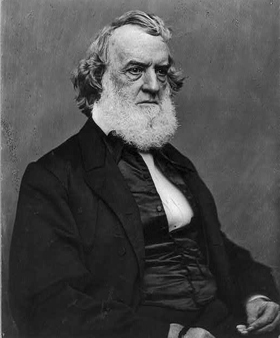
Relations with Washington were strained as General Meade could not help but surmise. The diary entires of President Lincoln’s friend, Secretary of the Navy Gideon Welles provide specific examples of opinions flying around the White House.
–––And that was before the Bristoe campaign, which brought the Army of the Potomac back to Washington D.C.’s doorstep. To add to the President's anxiety at this time were elections in two large Union states where a few months earlier, the anti-war Copperheads were seemingly ascendant. On October 14th Welles wrote:
On the 20th of October, Major-General Daniel Sickles was present in Washington meeting with the President. Sickles intended to boost his own reputation at Gettysburg by further undermining General Meade. Sickles claimed Meade wanted to retreat after the first days fight, but he, Sickles had voted to stay and fight it out. Sickles' subterfuge somewhat resonated with Welles, though not wholly, for he knew Sickles was of a bad character. Such were the circumstances of General Meade’s visit to Washington to see the President on October 22nd. He wrote to his wife about the meeting. General Meade's Visit to Washington 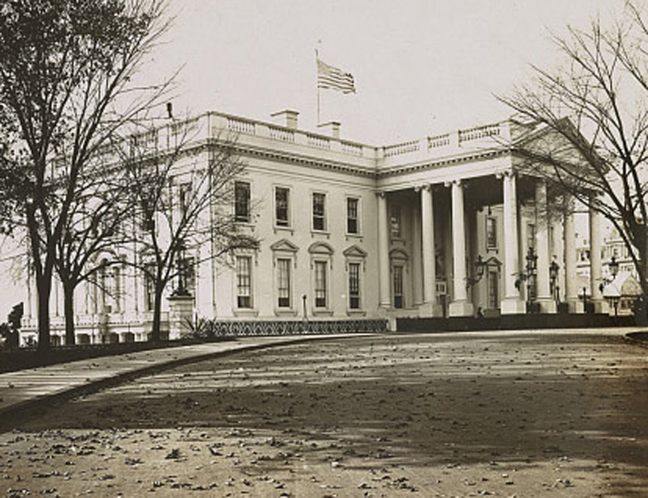 Letter to his wife Warrenton, October, 23, 1863. Yesterday I received an order to repair to Washington, to see the President. I arrived in Washington at 2 p.m., and expected to leave at 6 p.m, but was detained so late that I remained there all night, and left this morning, early. The President was, as he always is, very considerate and kind. He found no fault with my operations, although it was very evident he was disappointed that I had not got a battle out of Lee. He coincided with me that there was not much to be gained by any farther advance; but General Halleck was very urgent that something should be done, but what that something was he did not define. As the Secretary of War was absent in Tennessee, final action was postponed till his return. Letter to his wife. “The Life and Letters of George Gordon Meade” Charles Scribner & Sons, 1913. (p. 154.) During the next two weeks, the last of October, and the beginning of November, as work teams repaired the Orange & Alexandria Railroad, (the army's crucial supply line) Union cavalry scouted out the enemy positions. General Meade weighed his options and thought up a new stragtegy for an advance; one that he hoped would find approval from President Lincoln, who was directly urging him to attack Lee's Army. NOTES: [See Sources at top of page.] March Back to Bristoe Station; October 24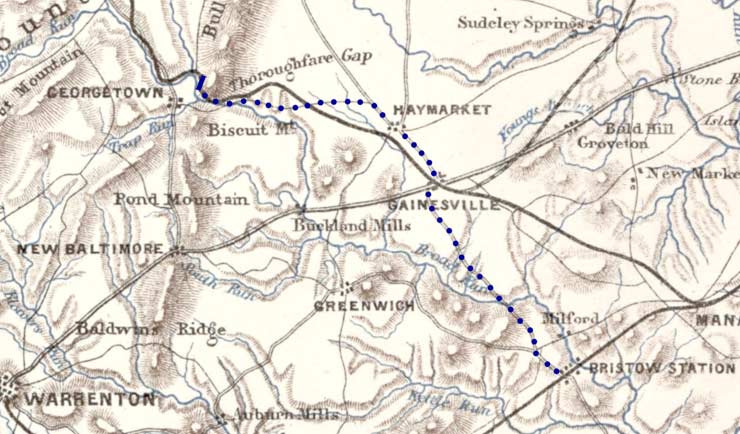 Map showing the route of march from Thoroughfare Gap in the Bull Run Mountains to Bristoe Station on the Orange & Alexandria Railroad. The Regiment slowly covered the 15 mile distance on a rainy day, October 24th. First Corps Marching Orders Headquarters
Army of the Potomac, Commanding Officer First Corps: The major-general commanding directs that you move your corps to Bristoe Station, on the Orange and Alexandria Railroad. The brigade of the Third Corps now there will be relieved by you. As soon as the bridge over Kettle Run is finished, you will have it properly guarded, and will guard the road as fast as finished as far as the crossings of Slaty Run. Very respectfully, your obedient servant. A. A.
HUMPHREYS, From “Three Years in the Army,” by
Charles
E. Davis, Jr.;  Charles E. Davis, Jr., continued: We were now camped on the farm of General Ewell, of the rebel army. The whole estate was in ruins; houses destroyed, orchards cut down, and every fence-rail burnt. Twelve days ago his own army camped on this spot, and probably his men burnt the rails, as our army was not allowed to touch rails.  John Newton's Report of the March. Bristoe, October 24, 1863––4 p.m. Brigadier-General Williams: The head of my column has just arrived here (Bristoe), after an extremely bad march. I do not expect the rear of it until long after dark. I started at 7 a.m. JOHN
NEWTON, From Austin Stearns' memoir, “Three Years in Company K” edited by Arthur Kent, Associated University Presses, 1976. We twisted around and camped a few days at Bristoe near where the fight was a few days before, when we halted here the first night. Heath the straggler laid his coat down near the fire where we were making coffee; some of the boys discovered that pest of the soldier “Army Crums” [lice] had taken possession and, not wishing to have them so near, took a stick and pushed the coat into a hole a few rods away. Heath soon returned and missed the coat, declared that some one had stole it. How he tore around and swore he would lick the man that had. After we had plagued and laughed enough for one time, we told him we saw it going toward a hole, and perhaps if he looked quick he might find it before they had time to bury it all up. Heath took the hint and said no more about it. Once day as we marched along we saw General Custer with his long golden locks. Diary of Sam Webster: Note: For more on the death of Joseph Kelly, see my previous webpage: “Advance to the Rapidan, Part 2.” In the Table of Contents reference, “The Death of Corporal Joe Kelley, Company D.” 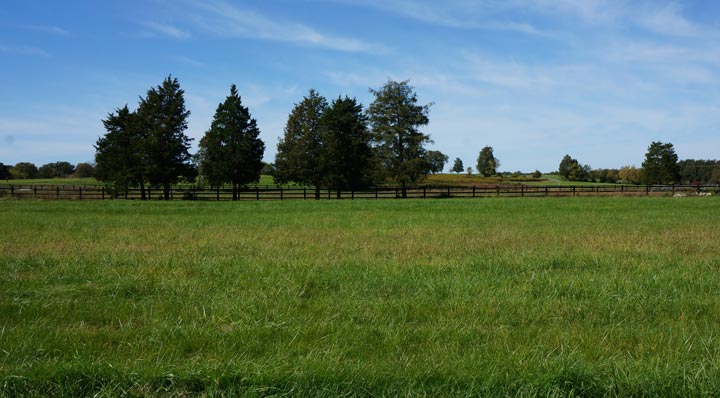 [Pictured is the Bristoe Station Battlefield in the vicinity of where Brigadier-General John Cooke's North Carolinians charged from the distant ridge to the railroad tracks (which are behind the photographer). The graves of NC troops scattered the campground of the 13th Regiment. Calvin Conant identifies graves from the 48th NC, Cooke's Brigade. Warren Freeman wrote that the graves appeared to be dead from the 40th NC, but there is no such unit involved in the fighting at Bristoe. I believe it is a mistake on the part of the original transriber of Warren's letters, and that he wrote Fortyeigth, not Fortieth. The mention of the 48th NC, and Sam Webster's diary entry, leads me to believe the regiment was encamped on this ridge south of the Brentsville road, rather than the fields north of the road, closer to Broad Run, (which is woods and a golf-course today). 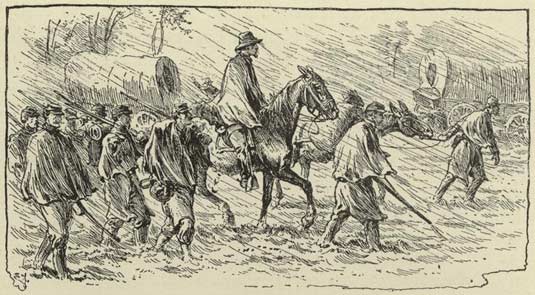 October, Saturday 24, rainy day Marched at 8 o’clock everything all wet went to Bristoe Station distance about 12 miles had to ford a creek knee deep got all wet wood is scarce am camped on the ground where the 2d corps fought the rebs on our retreat. October, Sunday 25, quite a plesant day last night was rather Cool we are now in the same place as last night I find a goodly number Rebbel Graves one spot I notice 8 in a roe all of Company K, 48 N.C., sevral Captains & Lieutenants buried here* drawed 3 days rations of Bread Coffee Sugar and one of Pork. 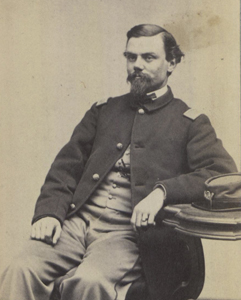
October, Monday 26, Cool morning pitched our Camp over new no drill to day continued Cool all day. October, Tuesday 27, last night was a cold one Ice froze 1/4 of inch thick in the brook near Camp I suffered with the cold all night Company drill this fore noon I can hear heavy firing in the distance we are in the same Camp among the graves some 200 or more all around October, Wednesday, 28, Very Plesant day warm enough to be out in Shirt-sleeves Inpected by Captain Livermore (Oliver C. Livermore, pictured) Battalion drill October, Thursday 29, Clear cool morning last night was very cool I am Ordly at Head Quarters our boys come in from Picket *48th North Carolina is in Brigadier-General John Cooke's Brigade, Major-General Henry Heth's Division, A.P. Hill's Corps, C.S.A. Heth's division fought on the south side of the road, in the fields pictured in the photograph above. Letter of Warren Freeman, Company A Warren's letter gets a little ahead of this narrative but he gives a simple yet effective description of the hardships of these marches. He also mentions that he is one of only 8 original members left of Company A, who were present when he joined it in January, 1862. The rest of the company are mostly good for nothing conscripts. Sam Webster also noted his company had the same number of original men present. In Camp at Bristow Station, Va., October 29, 1863. Dear Father and Mother, — After this long lapse of time I again resume my pen to let you know that I am in the land of the living. During the last three or four weeks we have been driven about from pillar to post with so much rapidity that there has been no chance for writing during the day, and the nights are so cold that it is almost impossible to use the pen. We left our camp near the Rapidan on
the 10th instant at about three o’cock A.M. ; the night was dark,
the
road muddy, so we made slow progress till daylight. We marched
down the river to Raccoon Ford, [Morton's
Ford––B.F.] and lay there the remainder of the day,
and at night orders came to pitch tents. We had just got them up
when orders came to down with them and pack up again; when this
was
done we lay round till about eight o’clock,
when we started on the back track and marched several hours, but on
account of the darkness did not make much progress, so we lay down for
the rest of the night; The rebels were quite close behind us on this march; at times we could see them shelling the rear-guard. Our division had to ford the river; the water was nearly up to our waists and rather chilly. We halted about half a mile from the ford and made fires to cook our coffee, when we had to move about half a mile further back behind a hill, where we lay all night. Next morning went back down to the river on picket; lay there that day and night, till one o’clock next morning, when we marched to Warrenton Junction; got there at ten o’clock, when we got some breakfast; lay there in line of battle till about three o’clock in the afternoon, when we started on and reached Bristow Station a little after dark: marched this day about twenty-seven miles. Routed out before daylight next morning to cook our breakfast and draw more rations; marched that day to Centreville, about twelve miles, got there a little before noon, and soon had our tents pitched, when we had to pack up and go out on the Bull Run road about four or five miles: our regiment was deployed as skirmishers. By this time I felt about used up, but in the
course of the night I got a little rest. In the morning we fell back to
Cub Run, about a mile and a half from Centerville; we lay there till
Monday, when we marched to Haymarket, about ten or twelve miles;
lay
there till late the next afternoon, when we marched through
Thoroughfare Gap in the night. The roads were very bad, and we had to ford one stream up to our knees; the distance was about twelve miles. We are camped right on the spot where the Second Corps had their fight. There are a number of rebel graves all around here — there are eight quite near my tent; they belong to the Fortieth North Carolina Regiment,* I perceive by the head boards. Well, I think this will give you some idea of soldier’s life. Contrast it with your own pleasant home, abounding in peace and comfort. I trust I may live to get out of it; time will tell, but certainly matters look rather dark just now, — so it seems to me. Personally, I have much to be thankful for: I am one of eight of the boys that were in Company A, when I enlisted; then the company numbered more than 100 men; some are on detached service, others in hospitals and rebel prisons. A few of these men will return to us again, but the number will be small. The conscripts that go to make up the company are of little account, and not to be relied upon in battle. But I must close, With kind remembrance to one and all, WARREN. * This is more likely the Fortyeighth North Carolina of Brig-Gen John Cooke's brigade. Calvin Conant references graves of the 48th. I cannot find reference to the 40th NC at the battle. ––B.F. Letter of Charles Barber, 104th New York Vols. Here is a great letter from same brigade as the 13th Massachusetts. All the marching and bivouacking in wet weather and wet clothes got all the men sick. Charles Barber writes things to his wife that Warren Freeman left unmentioned in his letters home to his parents. Whereas Warren outlines his personal difficulties leaving the rest to be infrerred, Charles expands a bit on the miserable conditions the soldiers endured even in the simplest of movements. I have corrected the spelling and added punctuation to the original formatting of the letter to make it more readable. Originals edited by and Rayond G. Barber and Gary E. Swinson 1991, Torrance, CA. Bristoe Station Va Oct 29 –– 1863 My Dear wife and children I rec yours of the 23 last eve. Very glad to hear from you. I am well now but I have been having the ague caused by cold wet and exposure marching all day and all night in the rain and mud fording streams three feet deep and getting wet through and through to the skin then sleeping on the wet ground under wet blankets and cold nights without fire (we was close [to] the enemy and could not have fires). It was all too much even for my strong constitution so it brought on the ague. We was all sick but are better now. 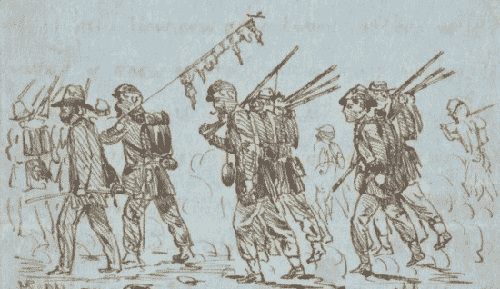 We are now at Bristoe 20 mile from the Rappahannock station. We expect another campaign and hard fighting after the rail road is repaired. The rebs tore up 25 mile of the road that must be repaired before we can advance. I shall write to you once a week or as often as I can. The mail has been stopped but is open now. They are making out the pay rool to day. Probably we shall be paid in two weeks; do not sent me any box till the campaign is over. I will write when to send it; look to the stove pipes in both houses and be careful with fire. Do not sell the cow. Try and get feed for her. Tell C. to write to me. We have just drawn our winter clothing with our over coats but we expect hard work before we go in to winter quarters. I see hard times but I am not a bit discouraged. I am doing my duty and I do it with a stout heart and strong hand and a bold front. 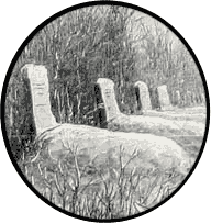
We are now camped on the ground where the battle was a few days ago. The dead are buried all around us. We buried the dead horses since we come here. We marched over the old Bull run battle ground. Some of the dead was not buried. Their bones still lie there bleaching on that bloody field. Ah the war is a terrible thing but I still hope to get home safe and see the war ended honorably. Oh how I could enjoy the comforts of home. I often see the time that I would give 20 dollars for a bed to sleep in but still I will not complain. It is all right. I am willing to stay my time out and that will not be long. I am serving in my last year now. I have only eleven months longer to stay even if I serve my full three years. Keep up good courage. The time we hope won’t be long that will keep us a part. Then I can see my family. I cannot imagine how little Charlie looks and acts with pants on. It don’t seem as if he is big enough to wear pants. Well time is making great changes in all things and of course our little family is no exception. As the general rule I think Willie had better not smoke any more nor use tobacco in any way. Has H paid all that note? Has Joe Steele paid that other dollar? Does that man pay the house rent punctual? Keep out of debt. Now is the time to pay debts but it is the wrong time to go in to debt. Well let us do the best we can and hope for the best and trust the future to a God of justice. Let us keep up our courage and hope. C Barber While the regiment camped at Bristoe Station, Colonel Leonard of the 13th Mass., commanding the brigade, took the time to tend to a little regimental business. In this instance he addresses promotions in the regiment. It is interesting to note the promotion of Captain Joseph Colburn to Major in the 59th Mass Vols., one of the new "veteran" regiments then oganizing in Massachusetts. Jacob Parker Gould, formerly Major J. P. Gould of the 13th MA, was appointed Colonel of the 59th. Colburn would be serving with a friend. Gould was away on detached duty at this time. He was at the conscript camp on Long Island, Boston Harbor, and would not return to the 13th MA. 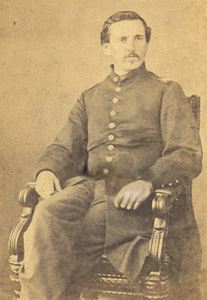  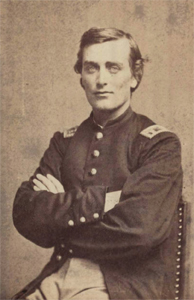 Pictured left to right, William B. Kimball, Michael J. Dagney,(top), Morton Tower. 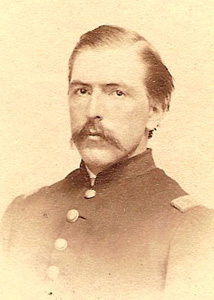 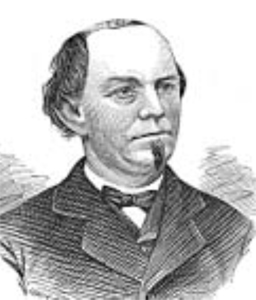  Pictured left to right, Samuel E. Cary, Abel H. Pope, Joseph Colburn. Letter; Colonel Samuel H. Leonard to John Andrew, Governor of Massachusetts. The following is from the Massachusetts State House Executive Correspondence Collection. Head Quarters 13th Regt.
Mass. Vols. To I have the honor to recommend for promotion to fill vacancies existing, the following named personas. First Lieut William B. Kimball, to be Captain in place of Abel H. Pope discharged for disability. Second Lieut. Michael J. Dagney to be First Lieut. in place of Wm. B. Kimball promoted. First Lieut Morton Tower to be Captain in place of Joseph Coburn, promoted to Major 59th Mass. Vols. October 23, 1863. Second Lieut Samuel E. Cary to be 1st Lieut. in place of Morton Tower promoted. First Lieut M. L. Smith declined promotion and Lieut Kimball is nominated in the above place for reason that by regular promotion he would have succeeded to it, but expecting another position which he failed to get. He now desires his proper place in line. I am Very Resp’y Your Obedient, S H
Leonard Journal of Colonel Charles Wainwright, Chief of First Corps Artillery 
Bristoe Station; Tuesday, Oct 27th. –– We were I suppose no longer considered necessary on that flank, & so were brought over here to be turned into “navvies” & set to work rebuilding the railroad. Large details from the Corps have been at it every day since our arrival, & “as many hands make light work”, have pushed it on very rapidly. Lee’s men must have been equally industrious at destroying; all the rails & sleepers were torn up, the latter burned & the rails heated in the fires so made & bent out of all hope of straightening; many of them were fairly wrapped around the trees. Beside this they destroyed all bridges, broke down the walls of some culverts, & tried to fill some of the cuttings. The destruction of the bridges over Bull & Broad Runs has delayed our work considerably as rails &c have had to be hauled from the former point in wagons. These bridges are now said to be finished so we may expect to hear the scream of the locomotive along here by tomorrow. A large proportion of the sleeps used are cut in the neighboring woods by the men. Corps headquarters and my own tents are on the same knoll on which we spent the night of the 13th when on our way up. The house under the lea of which we then sheltered ourselves has been destroyed, as well as every thing else in the way of a building about here. It is a bleak position, but dry; so we have had full benefit of the high & bitterly cold wind which has prevailed ever since our arrival, & have been just about as uncomfortable as we well could. A tent without a stove is far from a desirable residence such weather as this. We keep big fires burning out of doors but the wind blows the smoke into ones eyes whichever side of the fire you get; a shovel full of hot coals in your tent helps along nicely if constantly & carefully replaced; but I look with envy on the n-ggerrs belonging to the construction corps who have good stoves in their Sibley tents. My own discomfort is increased by the want of a decent servant. I could not get one when I was at home last month & have been working along the best way I could with an orderly to care for my horses, & John Brown (Sanderson’s boy) to look after my tent. He is remarkably stupid even for a n-gger, & almost useless. Ben ( another contraband) our cook too gets worse instead of better; so I have written to ask Mary to make another effort, so soon as they get settled in town, to send me both cook & groom. Anything will be better than what we now have; I do not hope for first rate men, but think cleanliness may be procured together with a moderate amount of skill & intelligence. 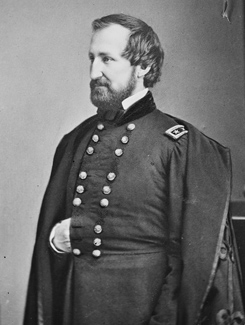
The newspapers tell us that Gen’l Rosencratz has been relieved. I suppose the authorities think that the people demand it on account of his late failure; or else he is not enough of a politician to suit them. I cannot myself see that any blame attaches to him for the disaster at Chattanooga; & believe nothing can be worse than this constant hanging of commanders. Thomas who succeeds him stands very high among the old army officers; much higher than Grant, who is placed in supreme command at the west. [Major-General William Starke Rosecrans, pictured.] I have about given up trying to understand their changes at Washington, I now only hope that they may by chance hit upon the right way & bring matters to a speedy close. The papers also tell us that Stanton & the President are far from pleased with the way Meade has conducted this little campaign, & that he is ordered to fight at all hazards. I trust this last part is not true, & that we shall not be forced into a battle where the chances are against us. As to Meade’s falling back to Centreville without fighting, I of course do not know all the ins & outs of the matter; nor am I sufficiently acquainted with the country more to the front where he could have offered battle. But so far as I do know the country I should say that Warrenton was the only other spot, & it was too late to secure that position when he had found out certainly what Lee was after. As to attacking Lee, I do not believe that it could have been done successfully at any point , as the time of his march was full of very strong positions. Some say that when he abandoned the line of the Rapidan we ought to have cut loose & pushed right on for Richmond. The only real difficulty in this would have been in getting supplies forwarded to us there by the time the stock we took with us was exhausted. But as the powers at Washington never would have consented to our leaving that city to its fate there is no use talking about the matter. The President has issued a proclamation calling for 300,000 more men to fill up the companies and regiments now in the field. I hope this may bring us some men, though I have very great doubts as to whether the last previous call has been filled. Nothing has yet been done decidedly as to re-enlistment of the old men who have served two years. If the new call should through any means be fully answered it will fill up every organization now in service to its maximum, I should think. A few recruits of one kind and another continue to arrive every day, but none for the batteries. I have three Batt’s, Reynolds, Stewart & Thomas, out on the high ground east of the railroad covering our flank in that direction. We had a small alarm come in that quarter yesterday & got under arms, but it did not amount to anything. The rest of my command lies on the other side of the road near H’d Qts.–– The 6th Maine & 1st M’ld are still with me. Change Camp to Kettle Run, October 30, 1863. 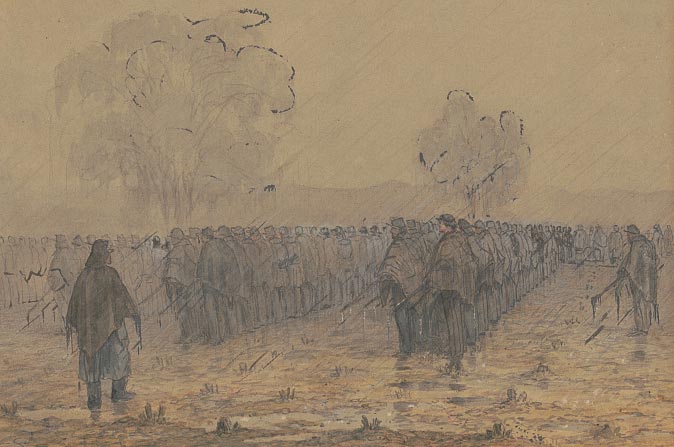 Artist James Fuller Queen did this sketch titled, “Waiting For The Cars, Hagerstown, Md.” in a portfolio titled, “Sketches with Co. B, 8th Reg. Pa.,” under the officers of the old “Southark Gaurd.” LOC. Diary of Calvin Conant, Company G: Saturday, 31. Rainy day we had a post Inspection and Muster in by Lieut-Colonel of 12 Mass got wet through drawd fresh beef this morning cleared off Pleasant moved Camp at noon down near Kettle Run [This may be Lt. Col. David Allen, Jr., 12th Mass. Vol. Inf., KIA Battle of the Wilderness, May 5, 1864.––B.F.] Charles E. Davis, Jr., “Three Years
in the Army”, continued: Calvin Conant, continued, 
Monday, 2. Pleasant day Company drill in morning Battalion drill in afternoon under Capt. Cary. [Capt. William Howard Cary, Co. G; brother of Lieutenant Sam Cary––B.F.] Tuesday, 3. Very pleasant day Went out on Picket am on the extreme left of our Div Pickets 9 men to do the duty for 2 days good Post as it is where their is plenty of wood. Wednesday, 4. Am on Picket it is a very Pleasant day got a loaf of Bread pie[?] In Camp had a tip top dipper of baked beans this Morning for breakfast our Sutler come up went in & bought hand of Tobacco Boston Evening Transcript; Correspondence of CLARENCE. Clarence's letter explains the spread out dispositions of General John Robinson's 2nd Division, 1st Corps. BOSTON EVENING TRANSCRIPT 1st Brigade, 2nd Divison 1st
Army Corps, From the Potomac Army. This corps is at present engaged in protecting the Construction Corps, consequently we are required to change our position occasionally. The 2d Division remains at this place but covers a large extent of country, embracing the late battle ground, which has been cleaned up, and could not be recognized, save by the graves of both men and horses, and the appearance here and there of an unexploded shell. The 1st brigade is now stationed at Kettle Run, a mile
below Bristoe,
on the line of the railroad, half a mile from its former
position. The weather continues cold, and its frigidity increases in imagination, if not in reality, while we change the heading of our letters, viz., from October to November. The health of the army is considerably better than it has been for some time past — the cool air serving to strengthen the sickly and toughen the well. Large bodies of cavalry are constantly passing, and it is expected that something interesting will occur in a few days. A large quantity of soldiers’ freight has just been received and delivered, and the boys have once more been making merry over the remembrances from home. CLARENCE. Move to Catlett's Station, (6 miles) November 5, 1863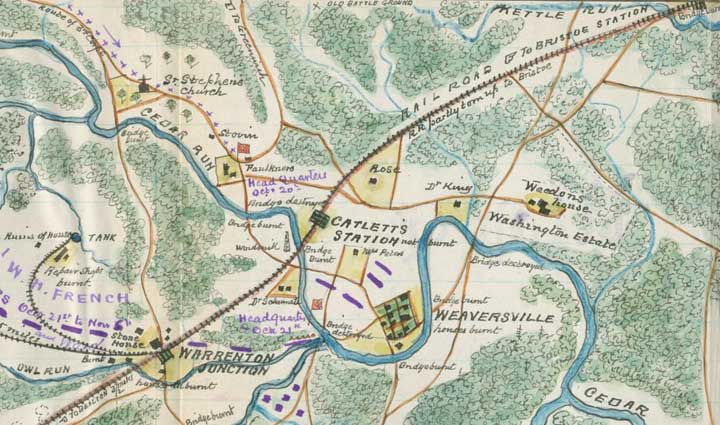 Robert Knox Sneden sketched this map of 3rd Corps Headquarters around Catlett's Station in October, 1863. General Newton's First Corps would relieve them November 5th. Two days later the left wing of the Army, comprised of the 1st, 2nd, & 3rd Corps, under Major-General William French would advance and engage the enemy at Kelly's Ford, as General Meade decided to advance upon the enemy into Culpeper County, Virginia. Orders to Move Camp Toward Catlett's Station; November 5, 1863. Headquarters
Army of the Potomac, Commanding Officer First Corps: The major-general commanding directs that you move your corps at once to the vicinity of Catlett’s, and hold two divisions of it ready for further orders. You will assign one division to guarding the railroad from Manassas to Warrenton Junction, as follows: One brigade at Bristoe; one brigade at Warrenton Junction, to protect that depot; the other brigade will be distributed to guard the bridge over Cedar Run and Kettle Run. The small bridges and culverts must be guarded by detachments. The road from Manassas to Warrenton must in addition be patrolled, if practicable, with the force assigned to the duty of protecting the road.
A. A.
HUMPHREYS, 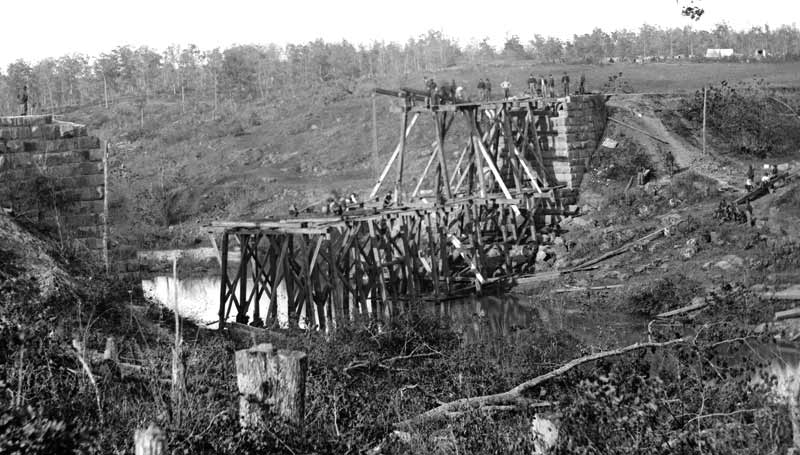 Pictured is the railroad bridge over Cedar Run at Catlett's Station, October, 1863. The bridge is being repaired after General Lee's retreating troops tore up the railroad during their retreat from Bristoe back to Culpeper County on the south side of the Rapidan October 17. Note the camp tents in the background on the horizon. They are probably 3rd Corps troops. Click here to view larger. Letter of Warren Freeman November 5. It seems like a lot of the regiment were on guard or on picket duty at this time. In
Camp Near Bristow Station, Va., Dear Parents, –– I received your kind letter of October 30 (No. 104) in due time: glad to learn that you are all as well as usual. 
I went on picket last Friday and came in Sunday; found the regiment had moved camp about a mile further up the railroad toward Cattlett’s. A lot of boxes for the boys came in yesterday. I wish you could start one for me about the 14th of this month. I wouldn’t put in anything that would be likely to spoil if the box should be detained a few days on the way. I would like some figs, raisins, and nuts, condensed milk, butter, one or two pies, and a little cake; I wish you would send a coffee-pot, a stout one, –– have the handle and nose riveted on; also one pair wool socks –– that will do. Colonel Leonard has returned and taken command of the brigade. WARREN. 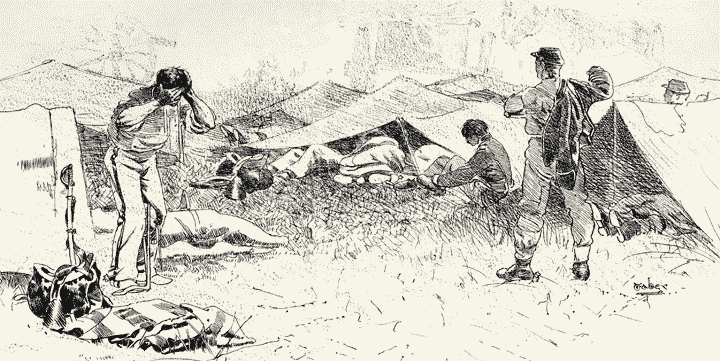 Fire in the Camp of the 16th Maine Major Abner Small of the 16th Maine, had been away from his regiment on recruiting duty. He returned on November 11th, and observed, “When I rejoined the regiment I found it in good spirits and visibly strong. More than five hundred recruits had been sent from Maine... our aggregate present was six hundred and fifty men.” The fact that so many new and inexperienced men were among the ranks of the 16th Maine, explains the remark of Sam Webster in his journal November 5. “Great fun out of some fellow's hunting Company C.” The natural reflex of the seasoned veterans was to mis-lead the green recruits. The following day a fire burned through the camps of Company E & F of that regiment. This caused another comment from Sam Webster, “Don't they suffer!” Charles E. Davis, Jr., “Three Years
in the Army”, continued: 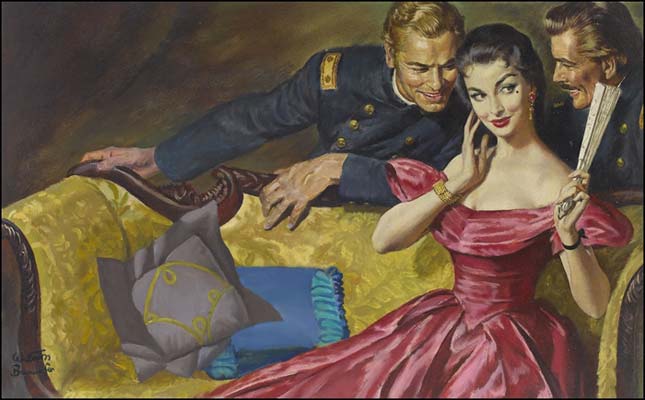 Davis continued: “Learn to labor and to wait,” says Longfellow; but that was written “befo’ de war.” Friday, Nov. 6. Changed camp to high ground on the east side of the station. Last week, while at Bristow Station, an old friend of
the regiment, a commissary of subsistence, made his appearance in our
camp, and before his departure agreed to sell to the officers a barrel
of whiskey, The Sixteenth Main boys had another streak of hard luck to-day. As they went into camp behind us, in the tall grass, it took fire, and before you could count ten, was all ablaze, leaving nothing behind but piles of blackened knapsacks, clothing, and equipments. Austin Stearns, “Three Years in
Company K” : Diary of Calvin Conant,
Company G: 
November, Friday, 6. Pleasant day we are now in the same place we stayed last night Moved Camp over on a hill the wind blows hard drawed ration of Whisky I don’t feel well at all Capt gave me a good drink of whisky. Diary of Sam Webster:
Thursday, November
5th,
1863. Cont'd: (In spite of the fun we made of them the 16th was a good regiment.) Sam Webster makes several mentions of the 16th Maine in his journal. The soldiers of the 13th Mass. often made fun of them, as they did truly seem to be a "hard luck" regiment. But at the same time they knew it was a good regiment. Major Abner R. Small wrote the excellent history of the 16th Maine, and occasionally made snide references to the snobs in the 13th Mass, whenever opportunity presented itself, yet likewise, they gained respect for each other the longer they served together. Colonel Leonard of the 13th, often commanded the brigade and was popular with the Maine men. From the 16th Maine regimental history, we learn the regiment had just been issued new clothing and blankets the very day before the fire.  From, “The Sixteenth Maine Regiment in the War of the Rebellion, 1861-1865”, by Abner Ralph Small; B. Thurston & Company, Portland, Maine: 1886. Nov. 5, 1863. Nov. 6. |
|
|
© Bradley M. Forbush, 2021 Page Updated October 23, 2021. 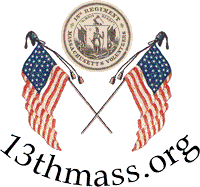 |
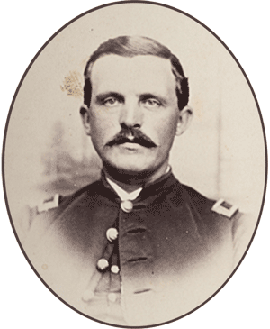 Apparently
there was little definite
knowledge of localities, since one writer observed that they reached
their destination at seven o’clock and marched around till eleven, and
another of Company E relates the interesting experience of trying to
obey the orders to follow Bull Run until the pickets of the Sixth Corps
were reached. After crossing Cub Run, three miles away, Major A.
D. Leavitt of the Sixteenth Maine, division-officer of the picket, went
on ahead to ascertain his whereabouts, leaving the Regiment in a
field. Returning in less than an hour, he reported a rebel camp
in the immediate front; in trying to retire, the line was halted
by our
own pickets when it appeared that we had been more than a mile beyond
our own lines. On calling the roll, Sergeant Dusseault found that
twelve men were missing. Major Leavitt (pictured) would
allow no
one to go
back after them but himself and he found the missing men fast asleep
where we had been waiting. Bringing them all safe and sound to
their own, established the reputation of the Major with the
Thirty-ninth from that time on, as long as he lived. To one
member of Company E, “Johnny” Locke, the memory of the Major was
specially grateful, because of the latter’s kindness. The young
man had been suffering for days from a carbuncle on his neck; in any
other place than the army, he would have been laid up completely, but
here he kept going; he was one of those found by the officer and,
recognizing the condition of the soldier, he kindly got down from his
horse and mounted the boy in the saddle. Sidney himself could
have done no more.
Apparently
there was little definite
knowledge of localities, since one writer observed that they reached
their destination at seven o’clock and marched around till eleven, and
another of Company E relates the interesting experience of trying to
obey the orders to follow Bull Run until the pickets of the Sixth Corps
were reached. After crossing Cub Run, three miles away, Major A.
D. Leavitt of the Sixteenth Maine, division-officer of the picket, went
on ahead to ascertain his whereabouts, leaving the Regiment in a
field. Returning in less than an hour, he reported a rebel camp
in the immediate front; in trying to retire, the line was halted
by our
own pickets when it appeared that we had been more than a mile beyond
our own lines. On calling the roll, Sergeant Dusseault found that
twelve men were missing. Major Leavitt (pictured) would
allow no
one to go
back after them but himself and he found the missing men fast asleep
where we had been waiting. Bringing them all safe and sound to
their own, established the reputation of the Major with the
Thirty-ninth from that time on, as long as he lived. To one
member of Company E, “Johnny” Locke, the memory of the Major was
specially grateful, because of the latter’s kindness. The young
man had been suffering for days from a carbuncle on his neck; in any
other place than the army, he would have been laid up completely, but
here he kept going; he was one of those found by the officer and,
recognizing the condition of the soldier, he kindly got down from his
horse and mounted the boy in the saddle. Sidney himself could
have done no more.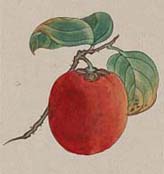 Saturday, October 17th,
1863.
Saturday, October 17th,
1863.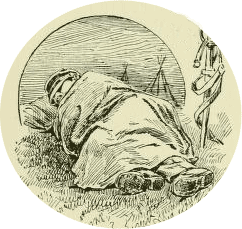 The
morning was very dark, and the road very narrow and
muddy, lying through dense forests. As a consequence, the
brigades were greatly extended and the halts very numerous. We
travelled all the morning, and at noon the corps was massed in the
woods at Morton’s Ford. The trains were all left in our former
camp about eight miles off. Here the brigade remained during the
afternoon, and I thought that the flitting opportunity for rest had
arrived, so I spread my rubber blanket on a pile of fallen leaves.
The
morning was very dark, and the road very narrow and
muddy, lying through dense forests. As a consequence, the
brigades were greatly extended and the halts very numerous. We
travelled all the morning, and at noon the corps was massed in the
woods at Morton’s Ford. The trains were all left in our former
camp about eight miles off. Here the brigade remained during the
afternoon, and I thought that the flitting opportunity for rest had
arrived, so I spread my rubber blanket on a pile of fallen leaves.
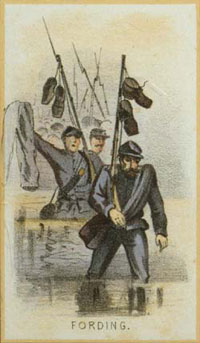 rolled our blankets at daylight, but did
not
march till late in the forenoon, when we started for Kelly’s Ford, on
the Rappahannock.
rolled our blankets at daylight, but did
not
march till late in the forenoon, when we started for Kelly’s Ford, on
the Rappahannock. 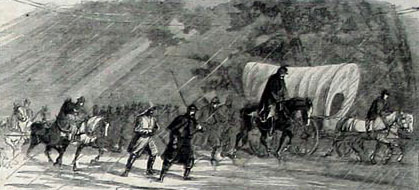 We
halted here till the 24th, when
we marched to this place in a heavy rain-storm.
We
halted here till the 24th, when
we marched to this place in a heavy rain-storm. 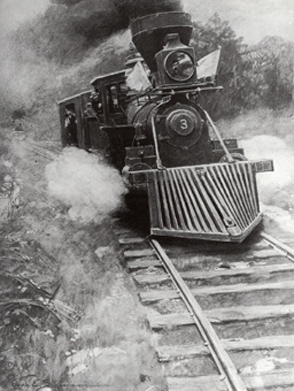 The headquarters of the division are situated between
the brigade camps, but nearer to the 2d brigade, and close to the
railroad, which must necessarily greatly interfere with the slumber of
our General and his staff, especially when the engineer of the incoming
train rushes his “iron steed” past the diminutive camp, with the shrill
whistle screaming at its loudest note.
The headquarters of the division are situated between
the brigade camps, but nearer to the 2d brigade, and close to the
railroad, which must necessarily greatly interfere with the slumber of
our General and his staff, especially when the engineer of the incoming
train rushes his “iron steed” past the diminutive camp, with the shrill
whistle screaming at its loudest note. 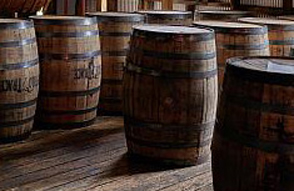 which was purchased by
subscription. Of course it was
to be used for medicinal purposes only, that is, when the men were
liable to become unfitted for duty by unusual fatigue or exposure
during bad weather. Now, it so happened that the camp was
excessively dusty, making the cobwebs in the throat impenetrable, and
this whiskey was the only thing that would remove the
obstructions. When it came to pass that the possession of this
whiskey was known among the men, we pestered the lives nearly out of
the officers with requests for this very effective medicine, with more
or less success according to the disposition of the officer. When
exposure seemed a frail and insubstantial reason, we invented
one. If this narrative of ours should by chance be read by one of
our temperance friends, he will hold up his hands in horror, possibly,
at this statement. We can only say, in excuse, that we were too
young to appreciate what a terrible enemy we were fooling with.
As soon as our service ended, having no further need of stimulants,
we—
But never mind what has happened since, we are relating only what
occurred while were were in the service.
which was purchased by
subscription. Of course it was
to be used for medicinal purposes only, that is, when the men were
liable to become unfitted for duty by unusual fatigue or exposure
during bad weather. Now, it so happened that the camp was
excessively dusty, making the cobwebs in the throat impenetrable, and
this whiskey was the only thing that would remove the
obstructions. When it came to pass that the possession of this
whiskey was known among the men, we pestered the lives nearly out of
the officers with requests for this very effective medicine, with more
or less success according to the disposition of the officer. When
exposure seemed a frail and insubstantial reason, we invented
one. If this narrative of ours should by chance be read by one of
our temperance friends, he will hold up his hands in horror, possibly,
at this statement. We can only say, in excuse, that we were too
young to appreciate what a terrible enemy we were fooling with.
As soon as our service ended, having no further need of stimulants,
we—
But never mind what has happened since, we are relating only what
occurred while were were in the service.